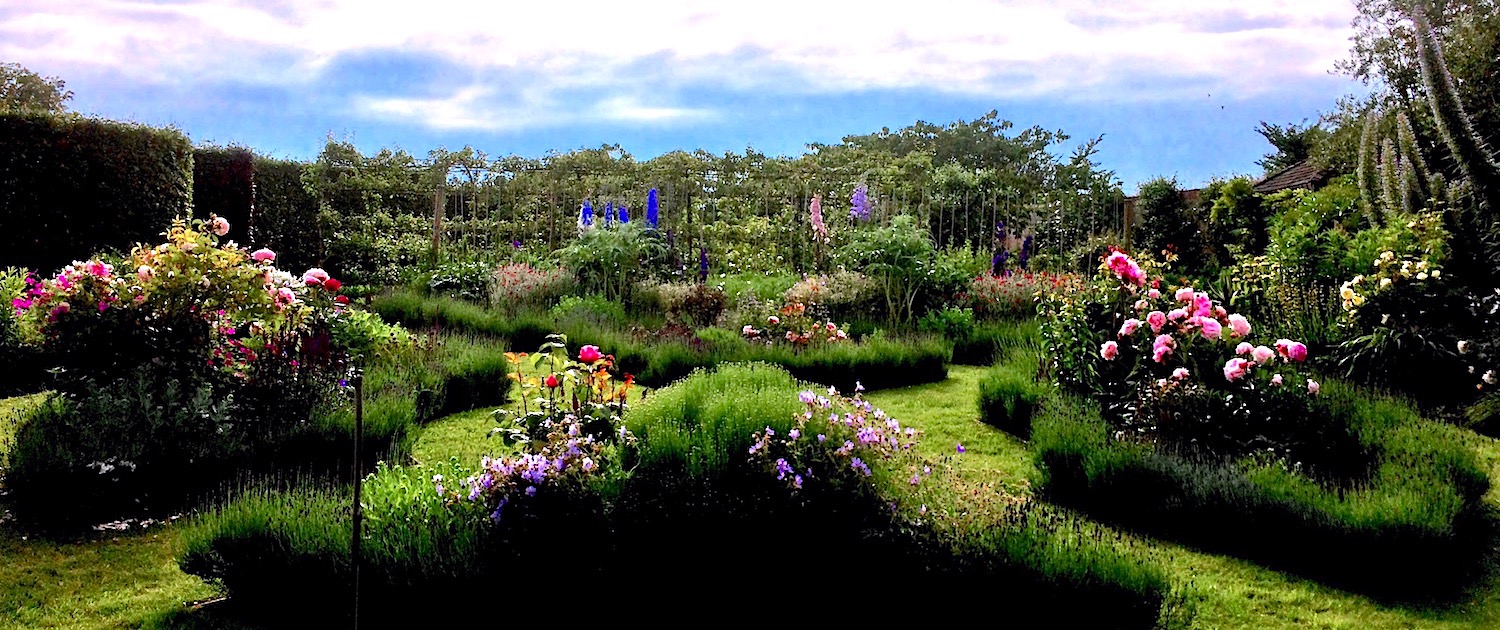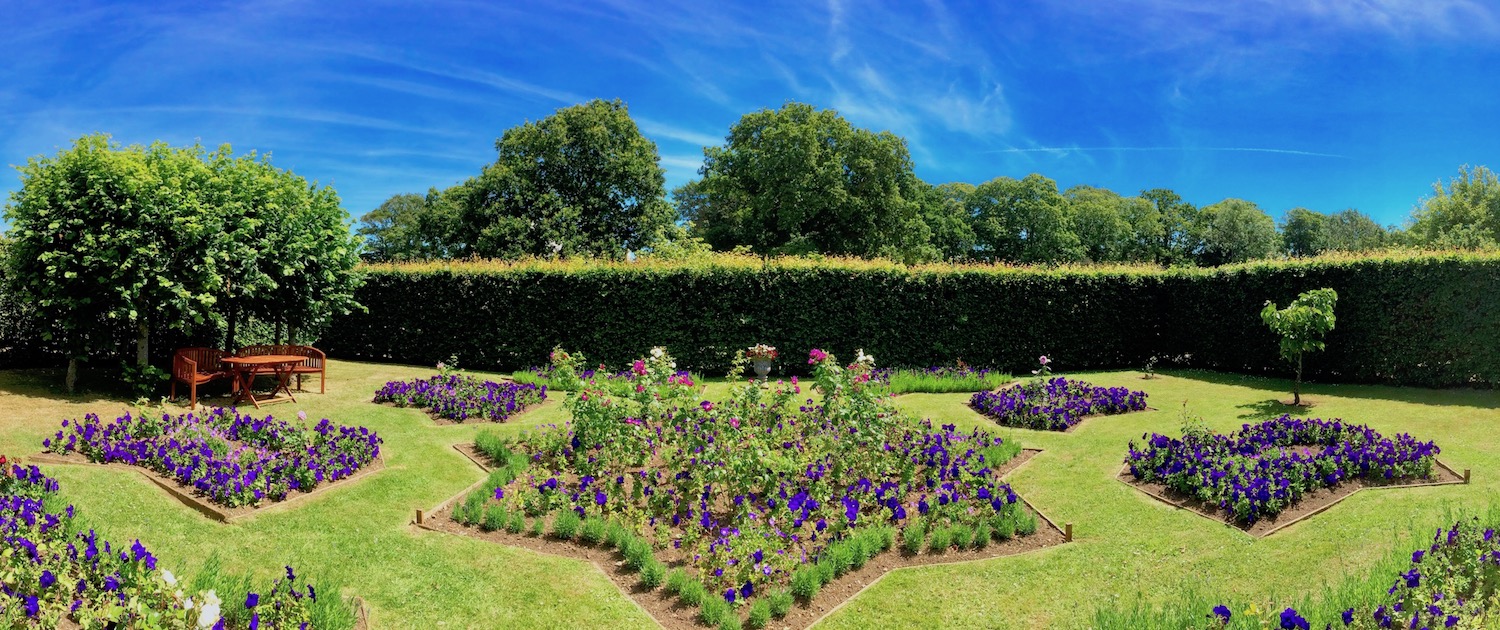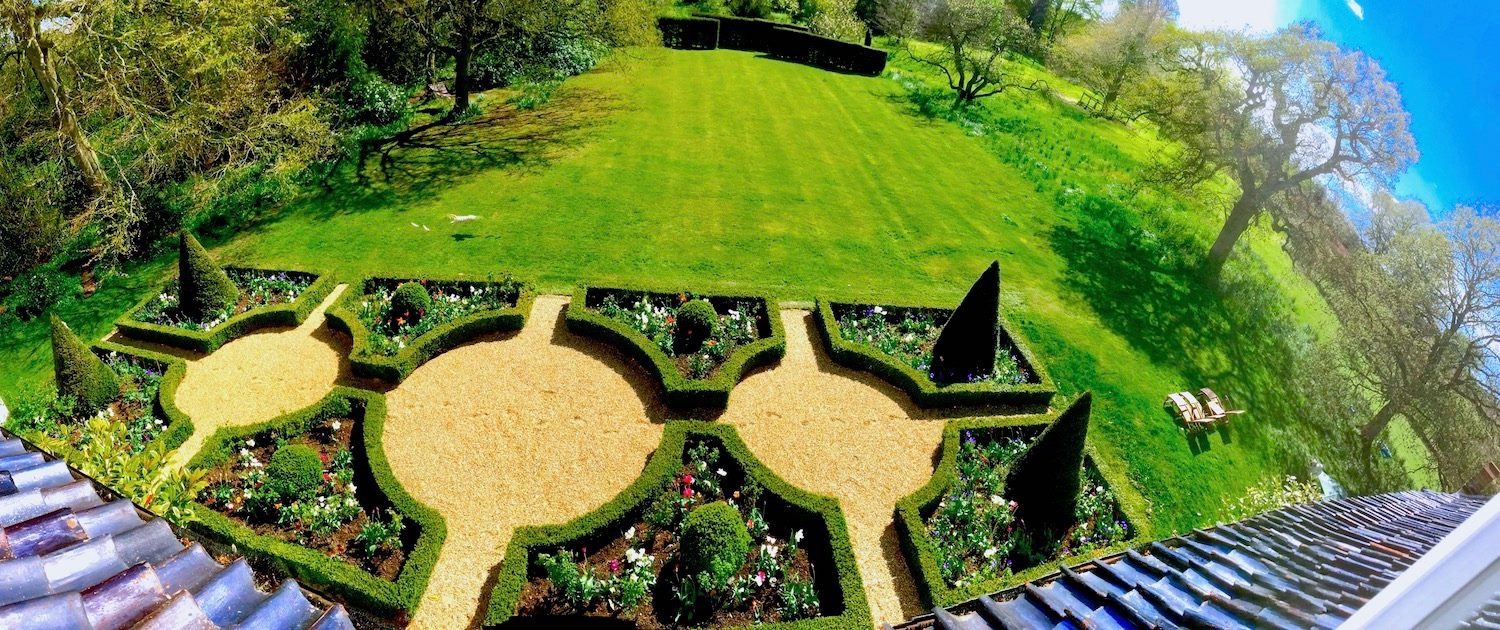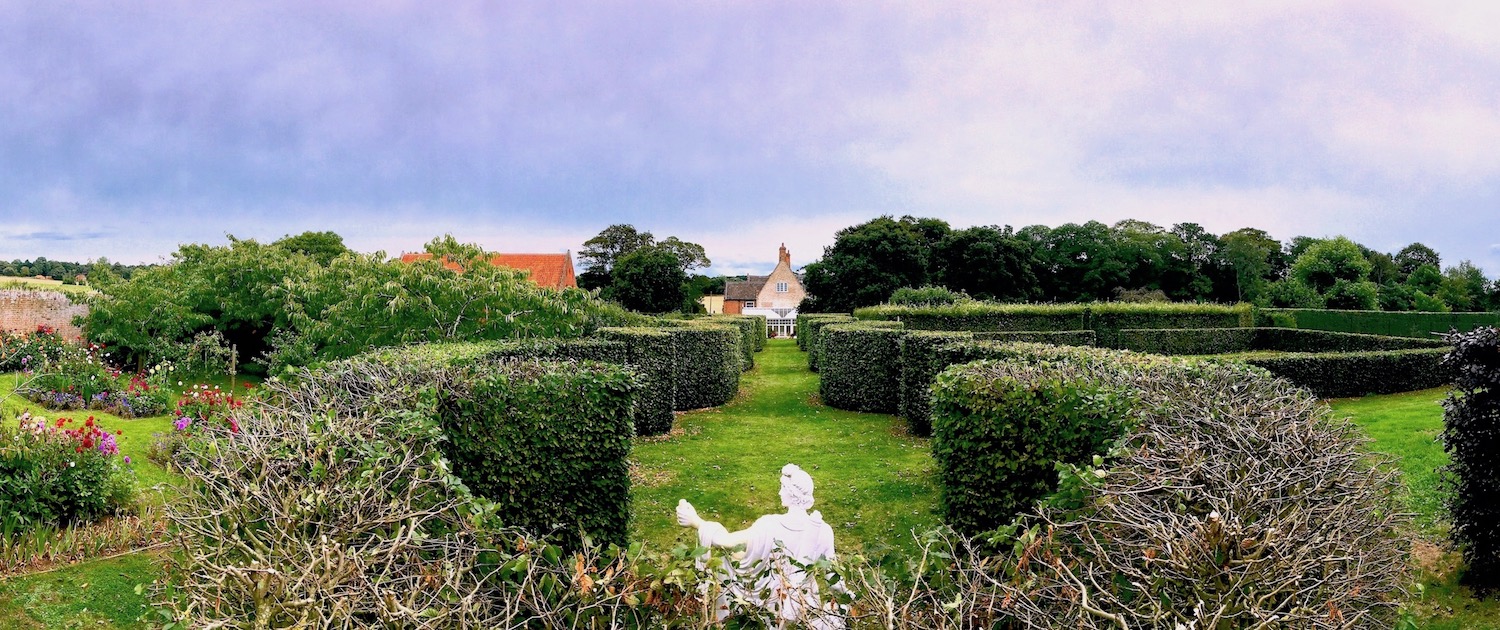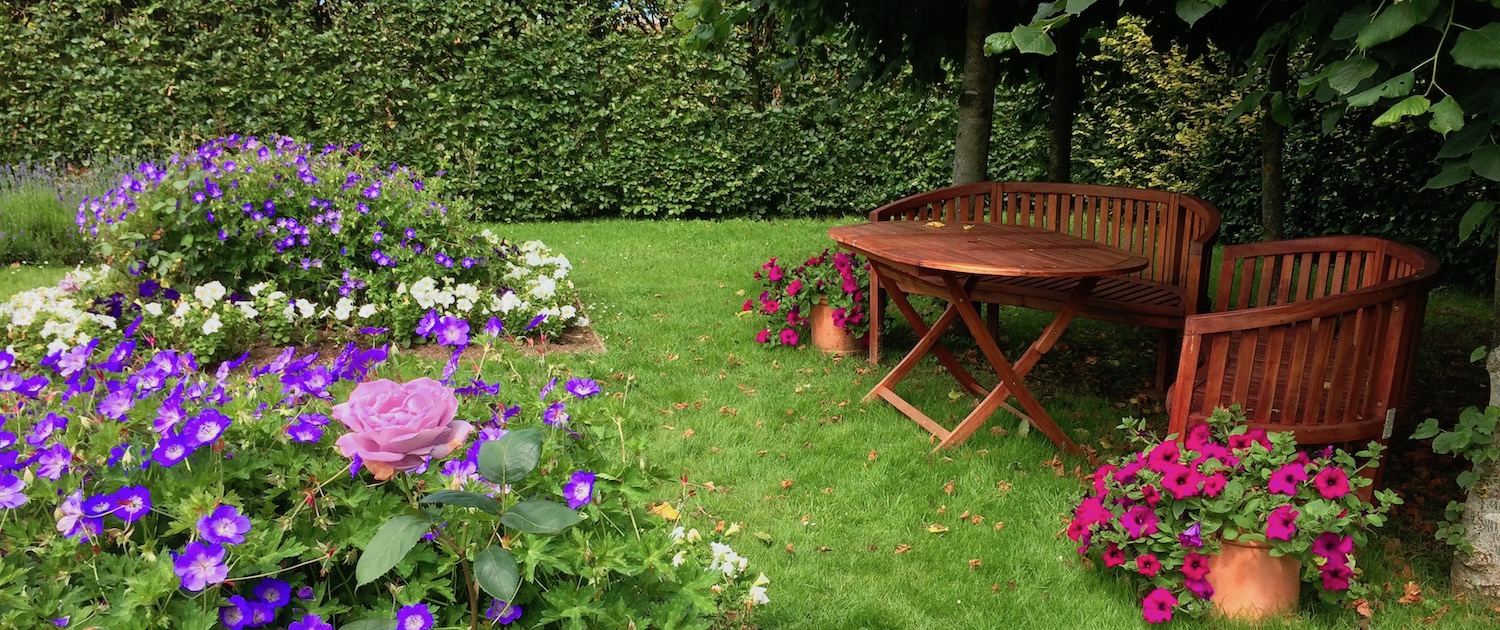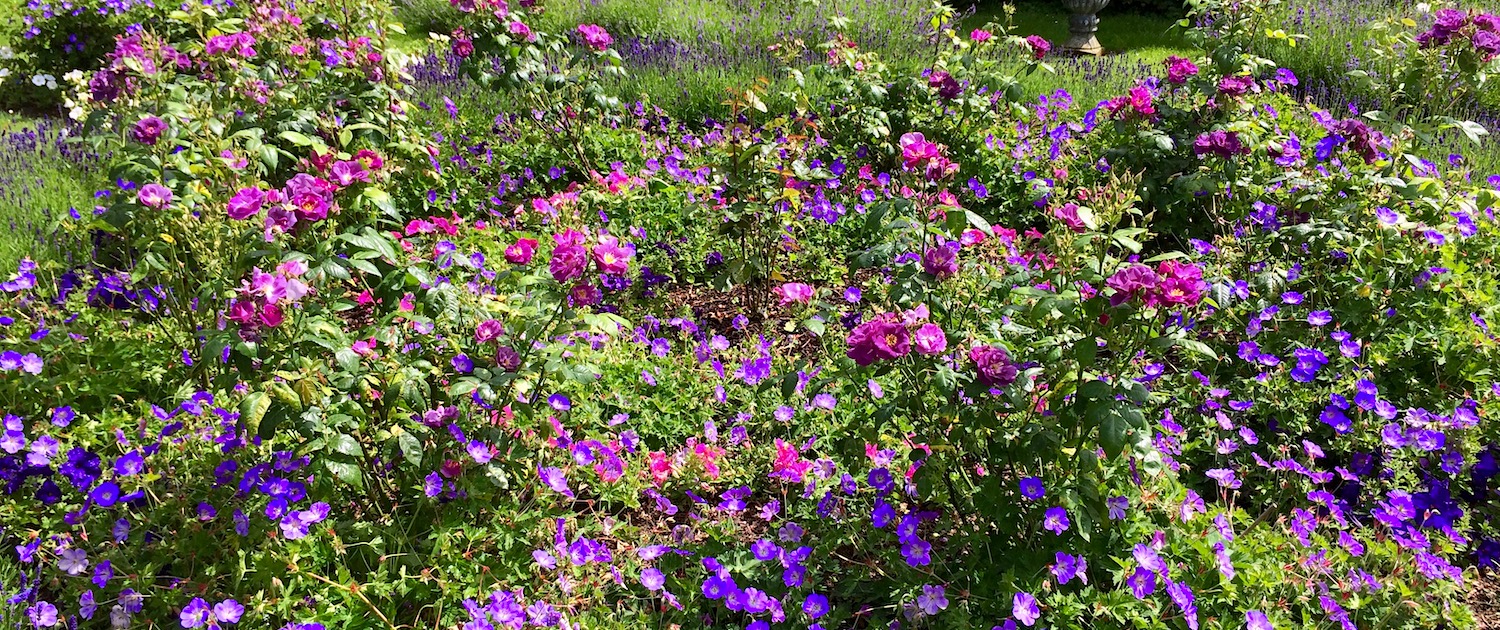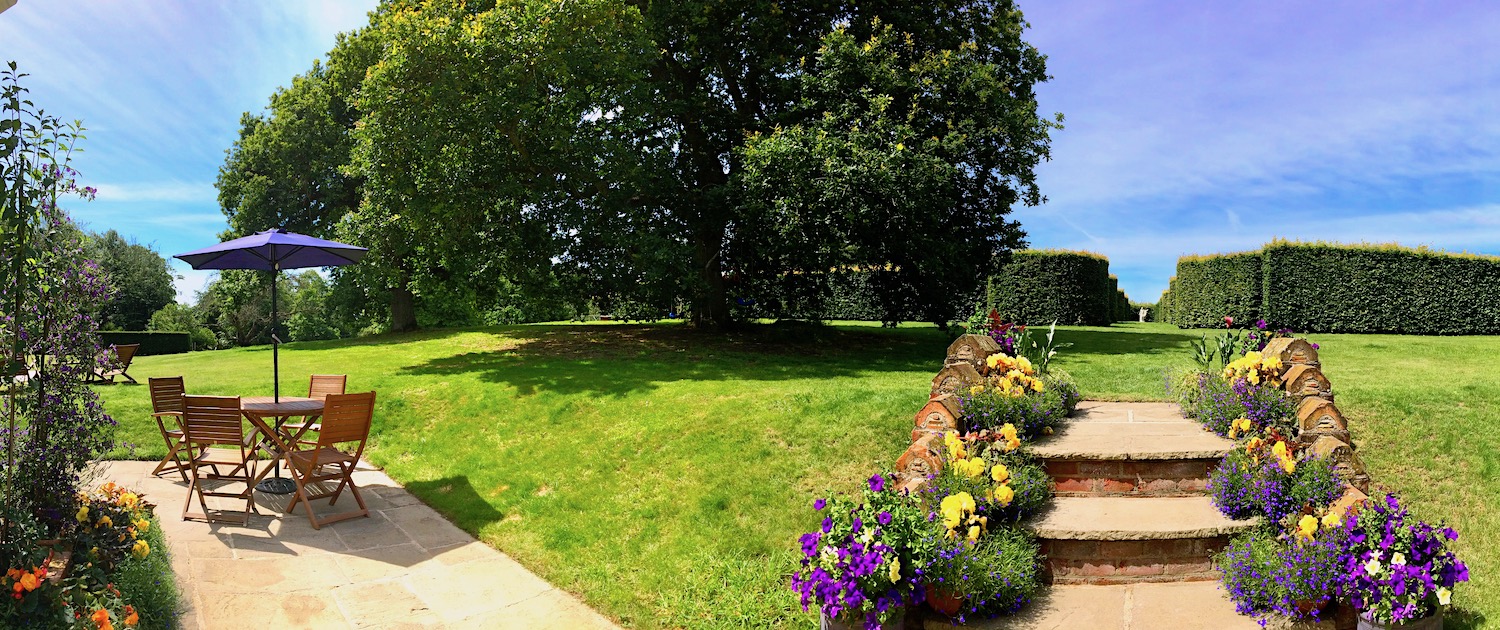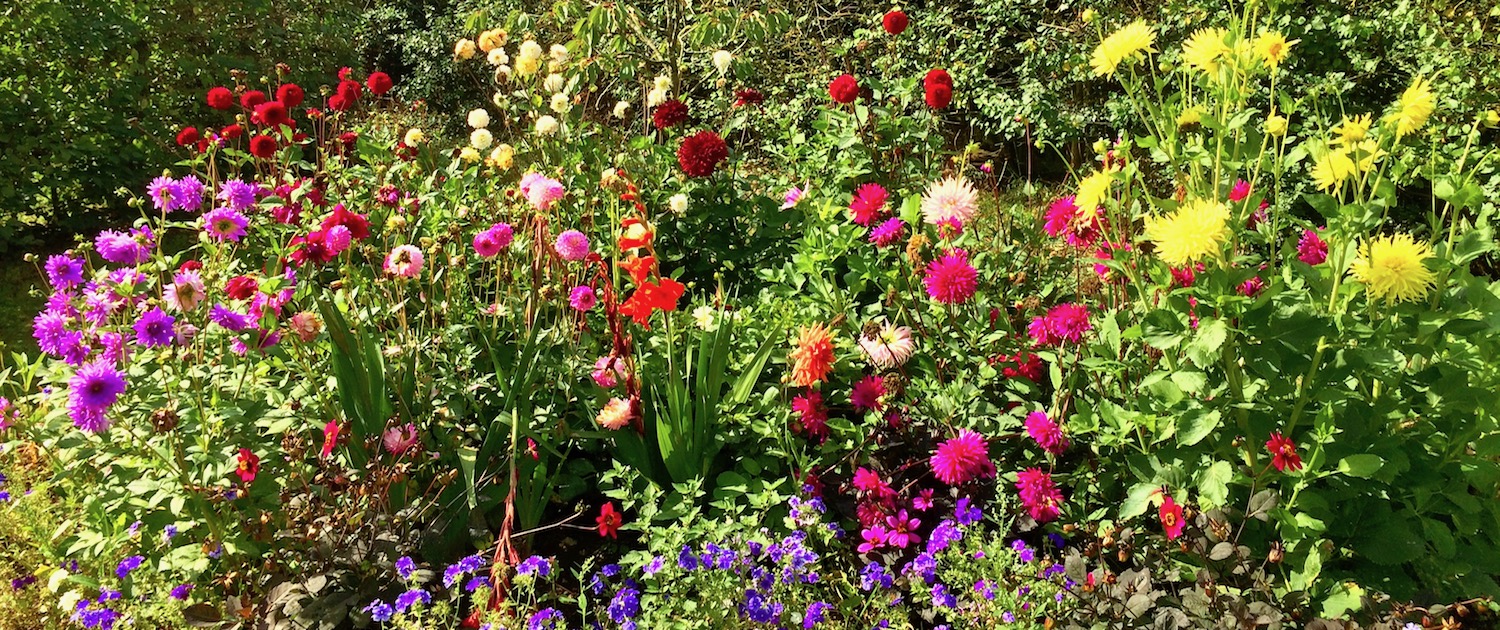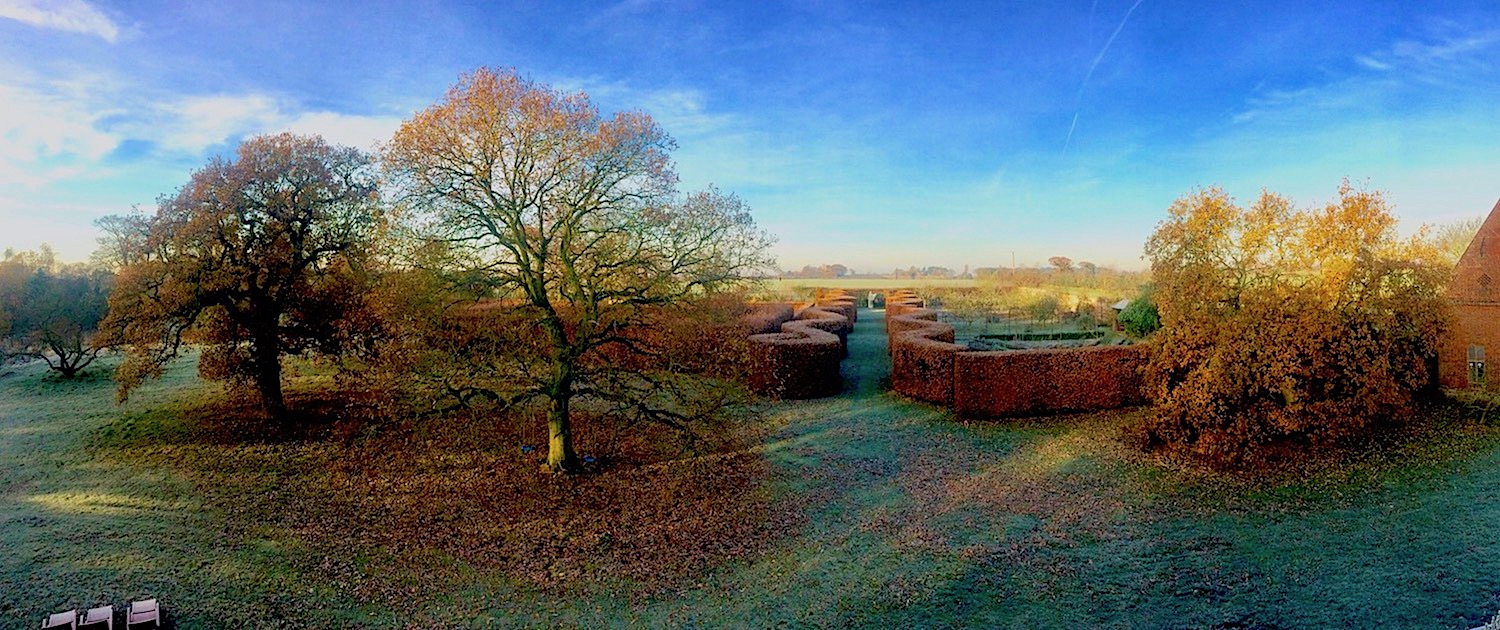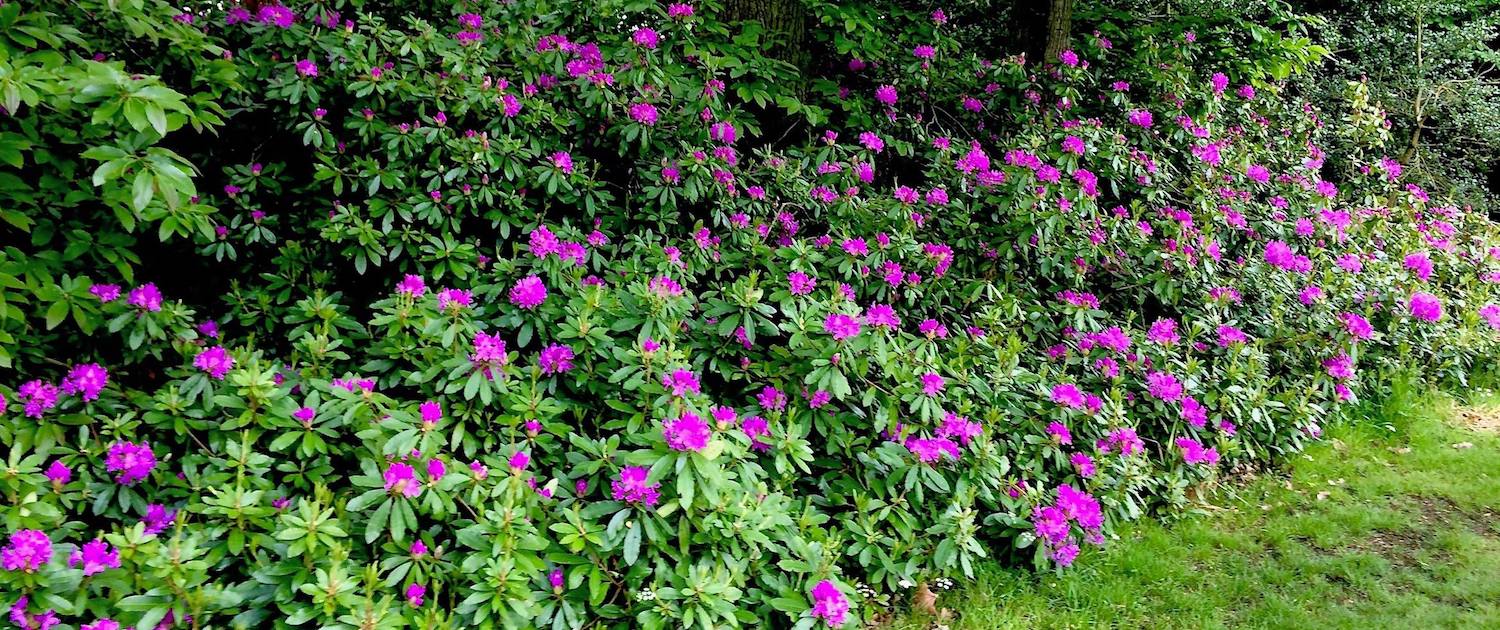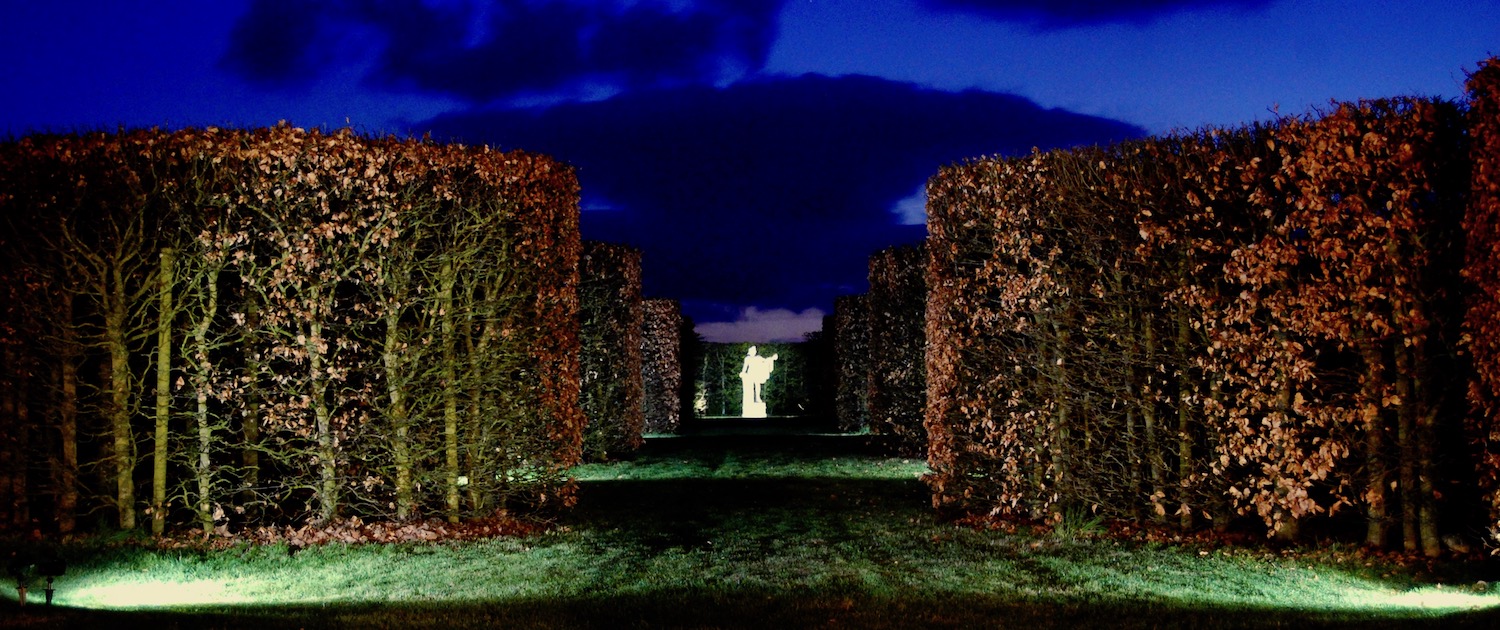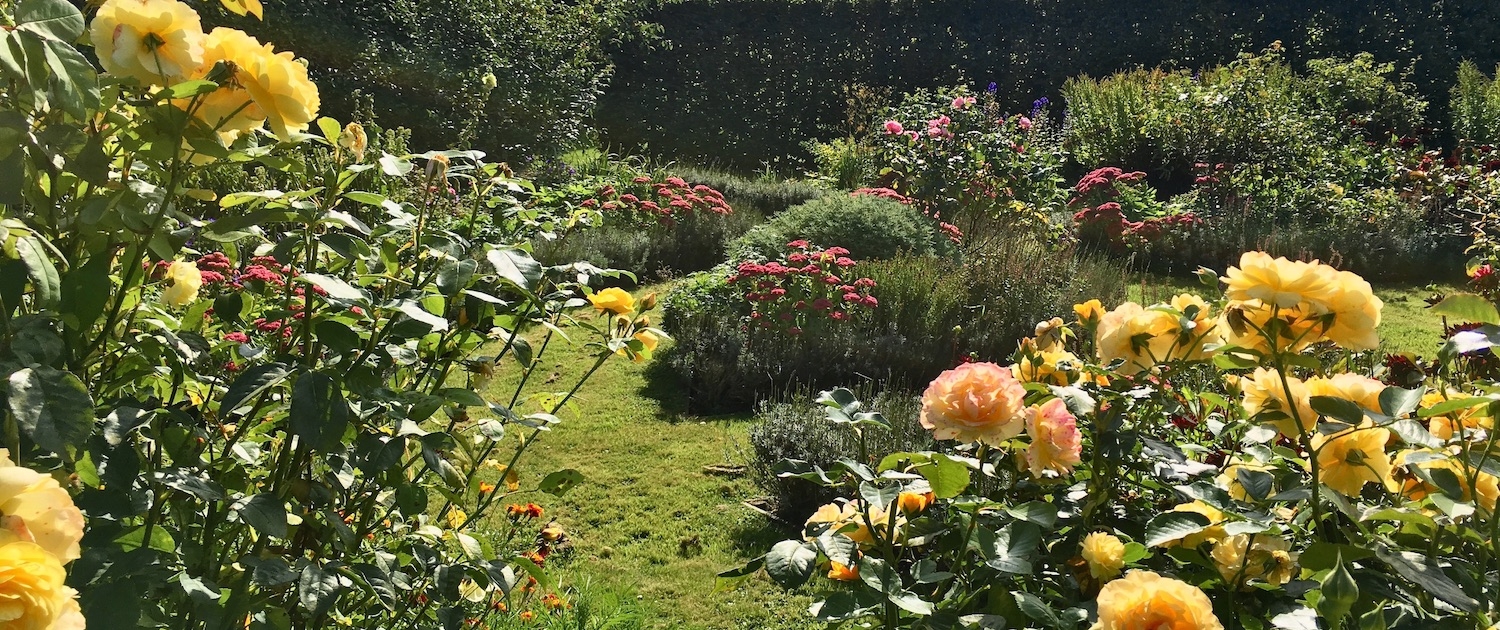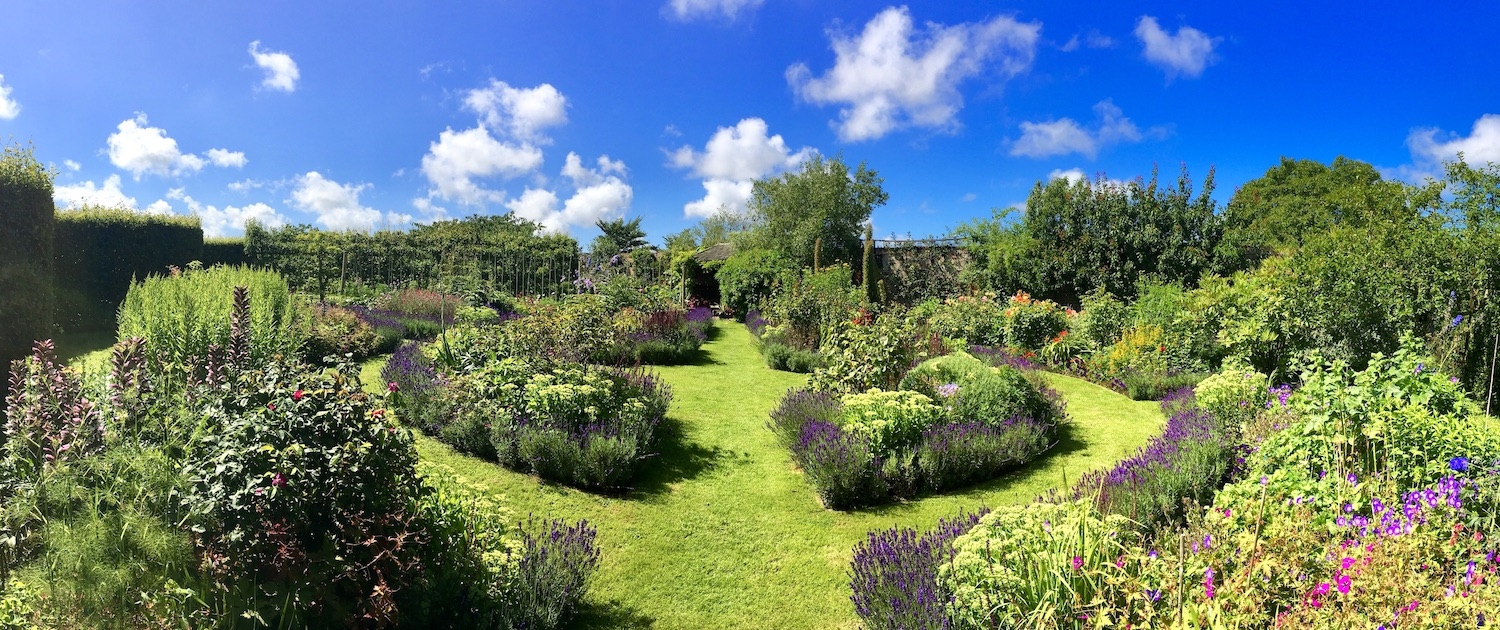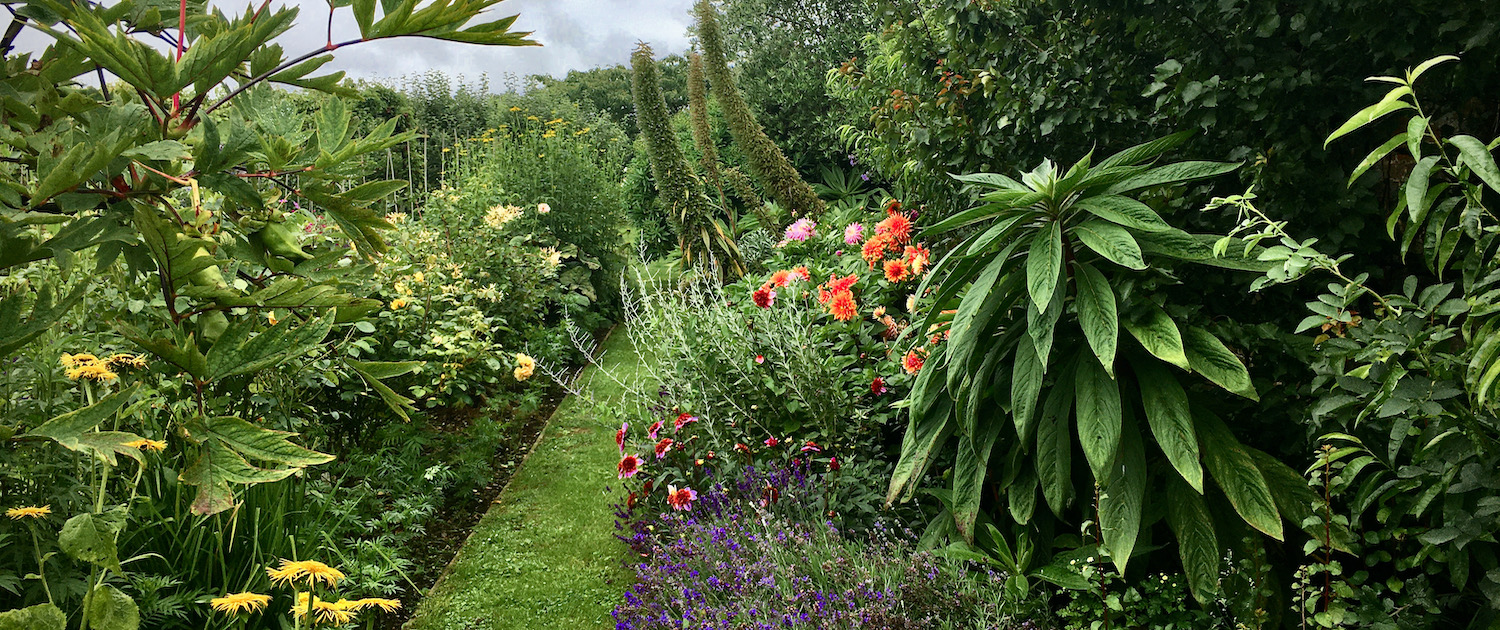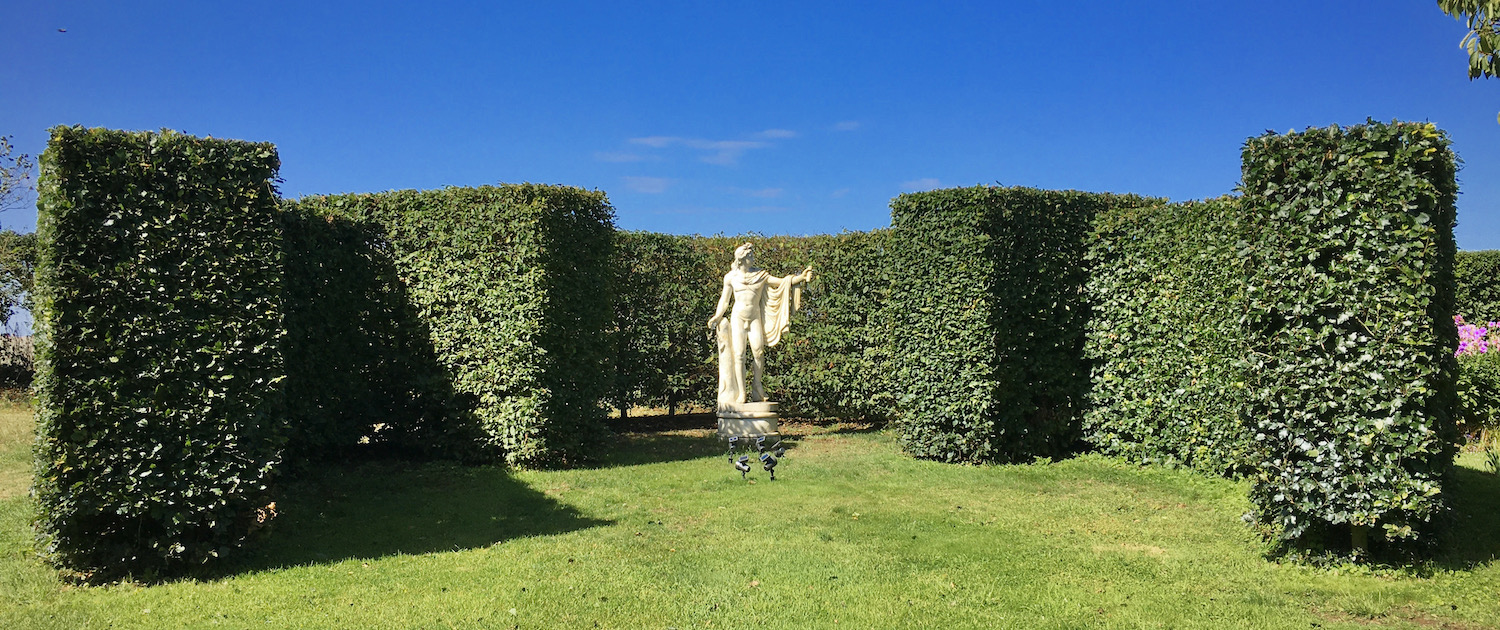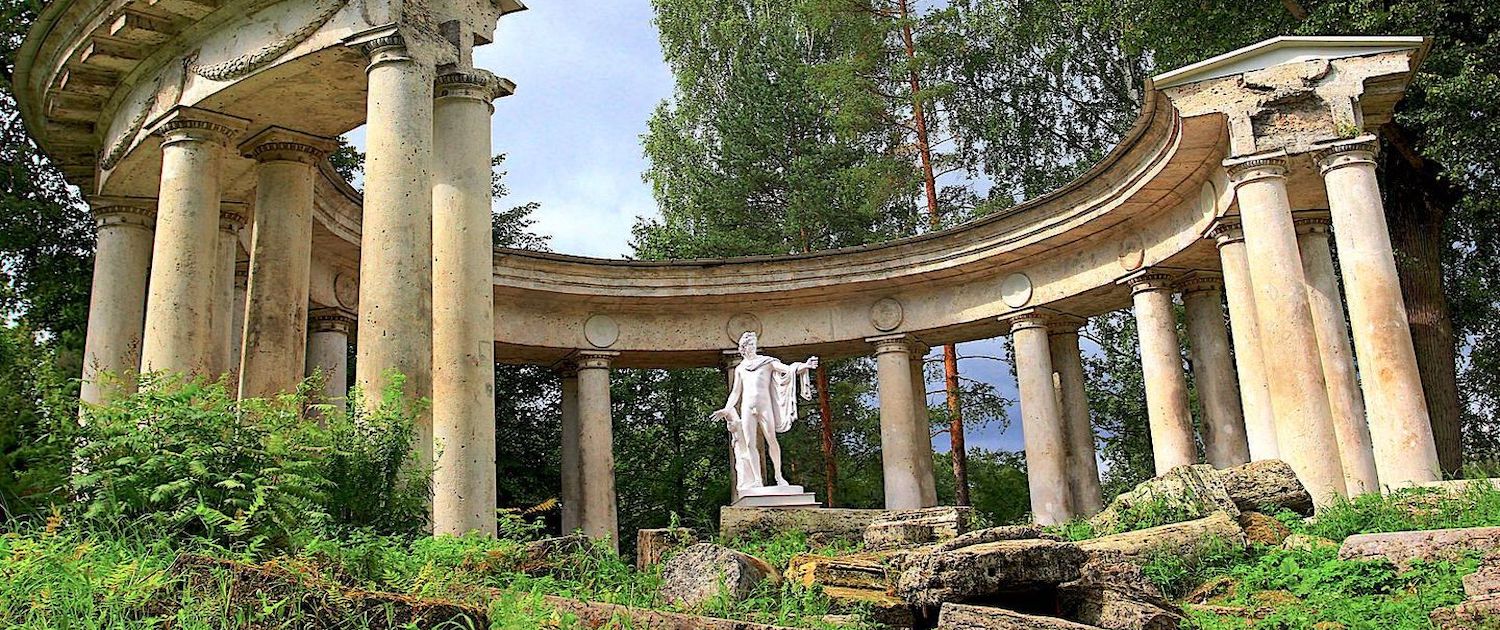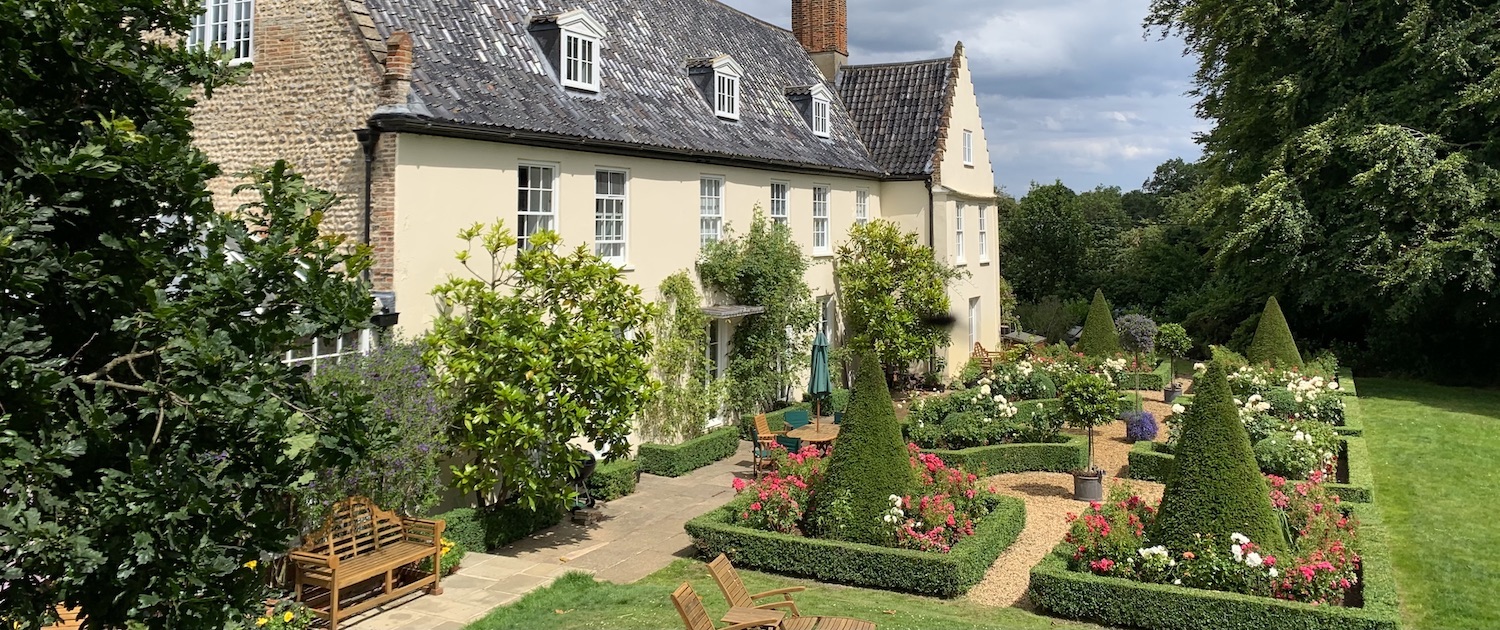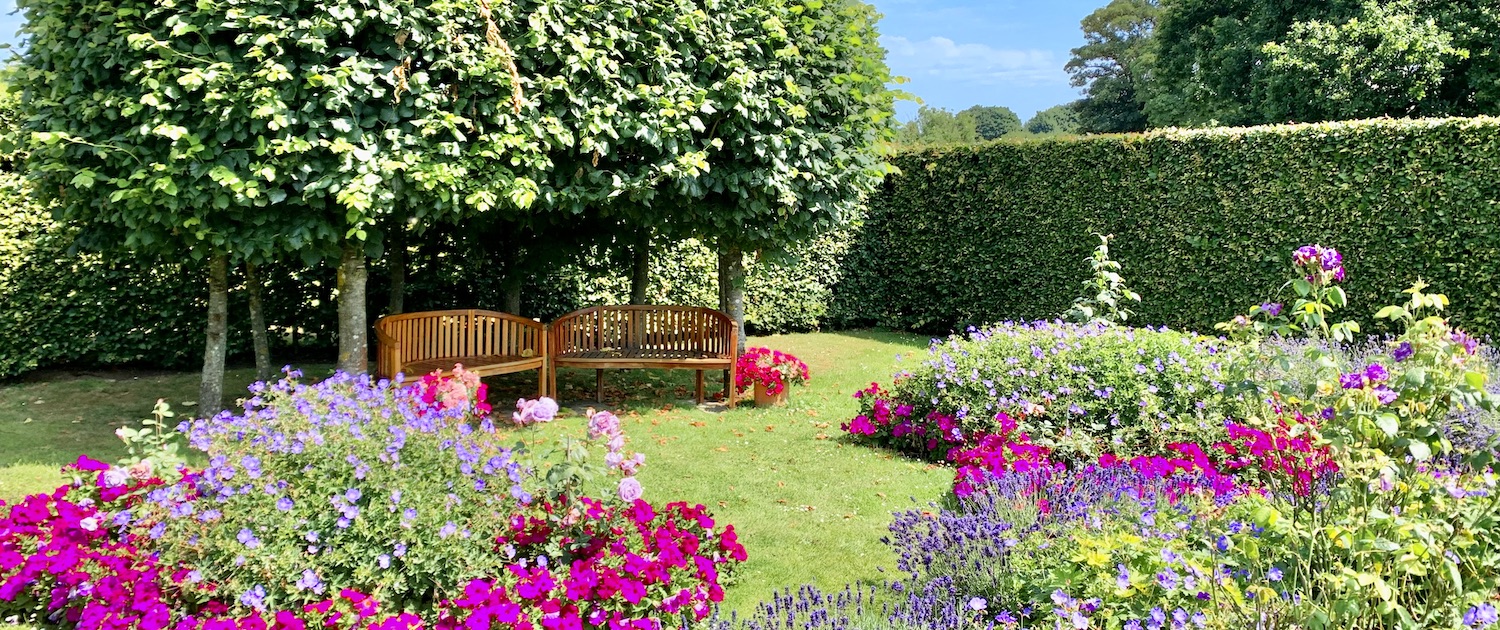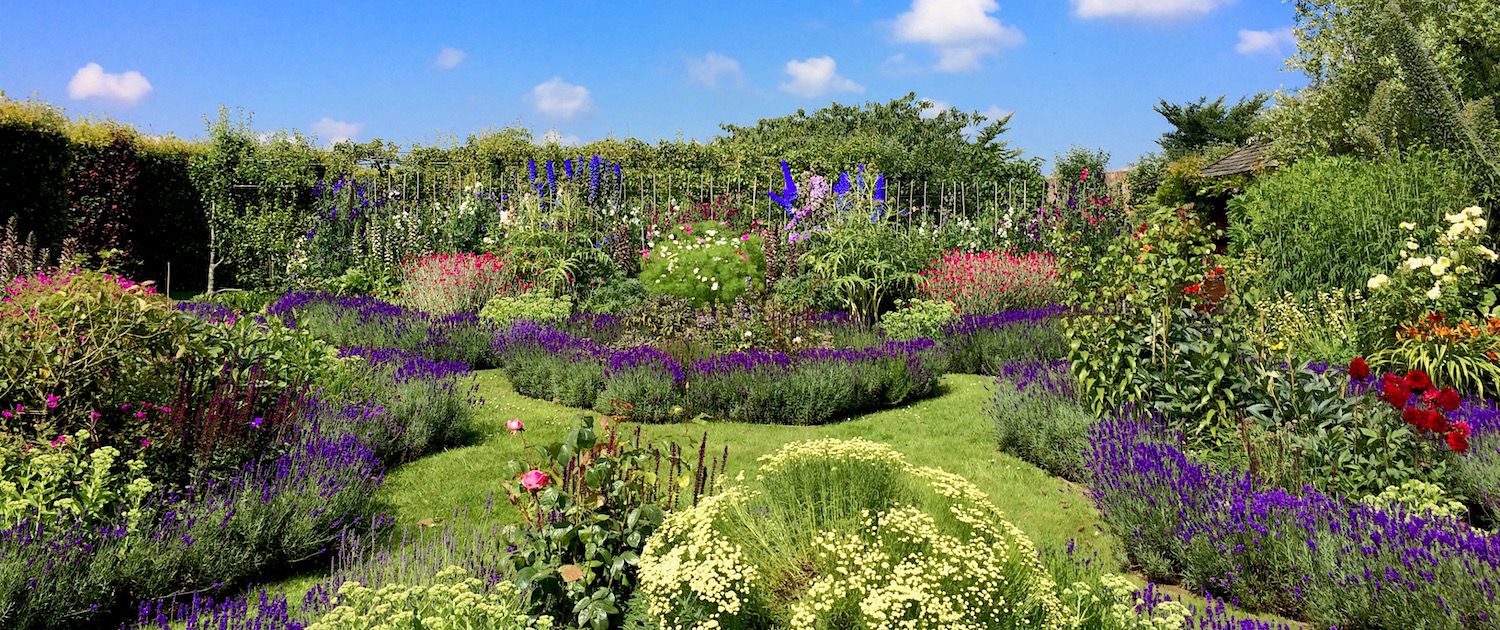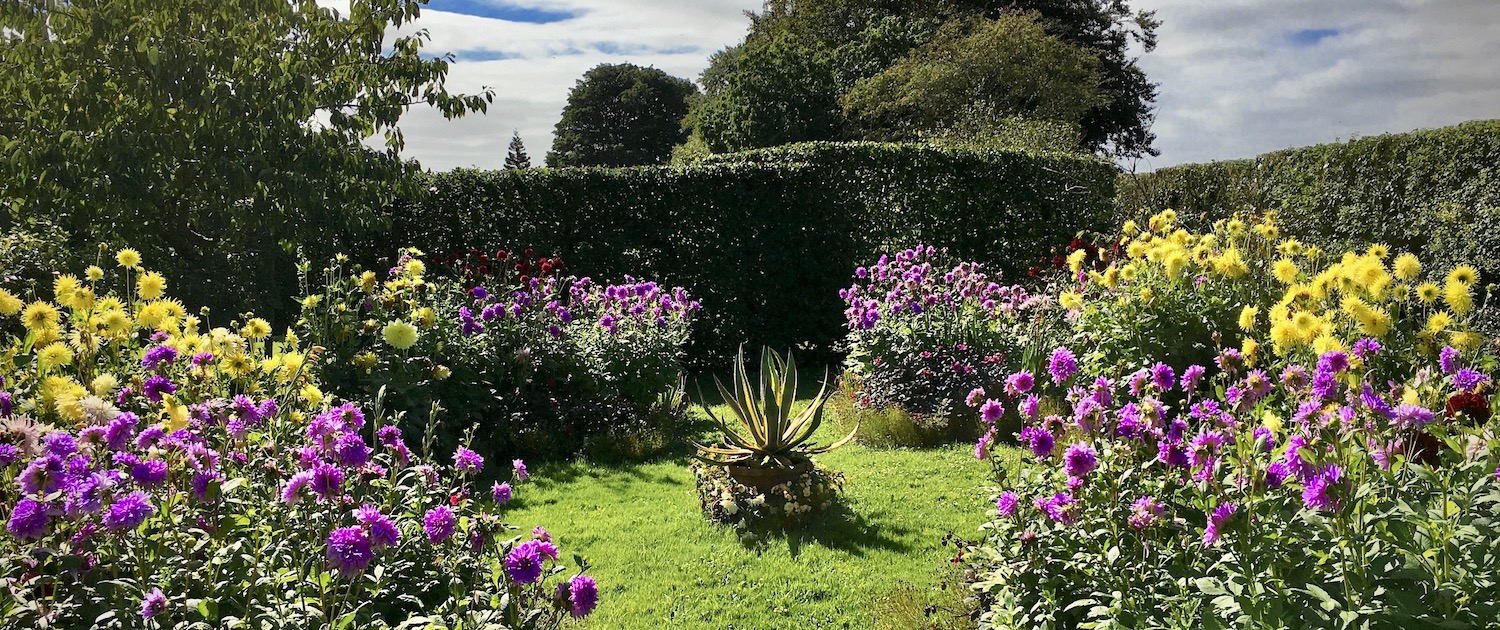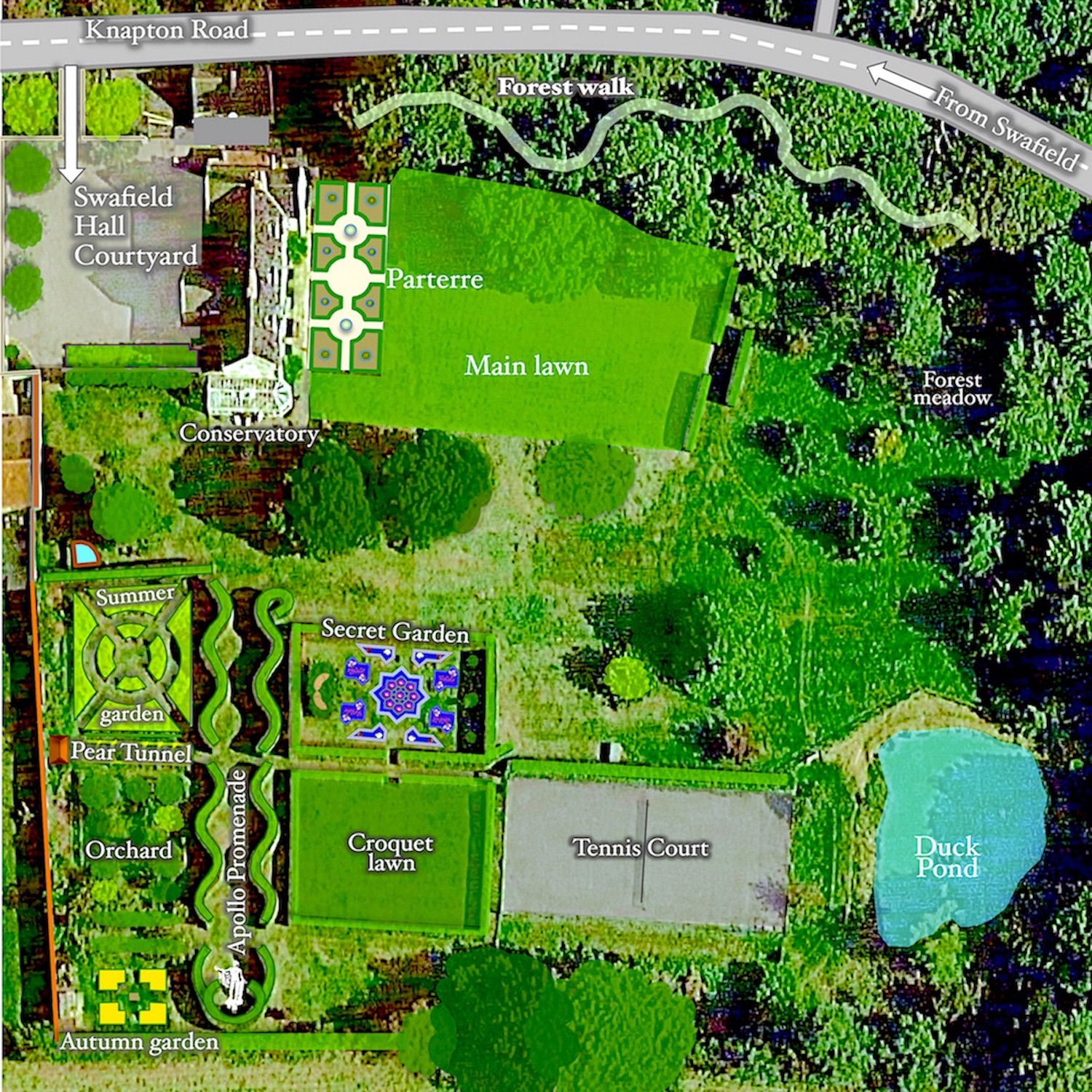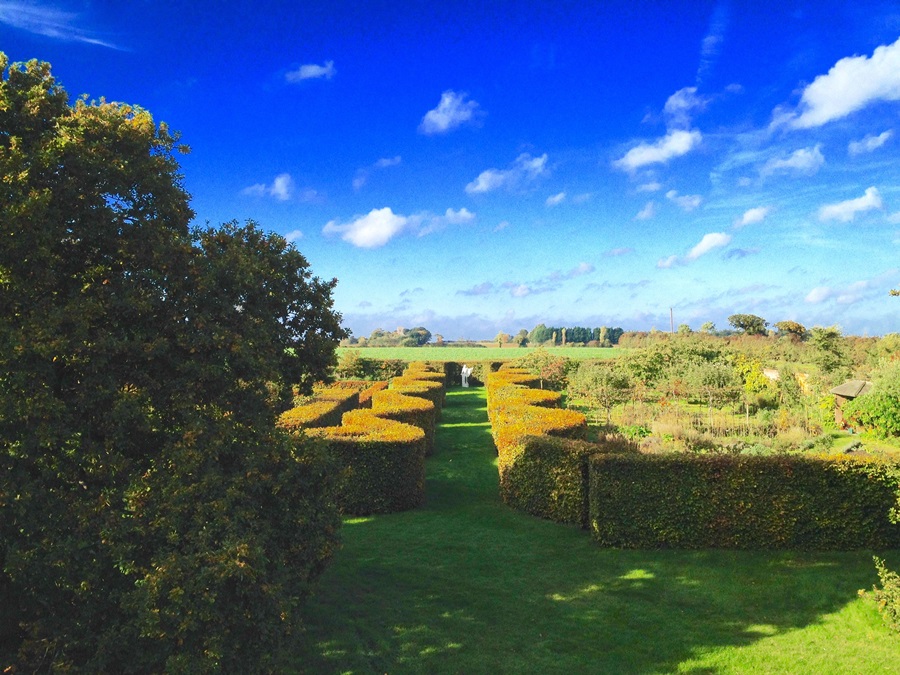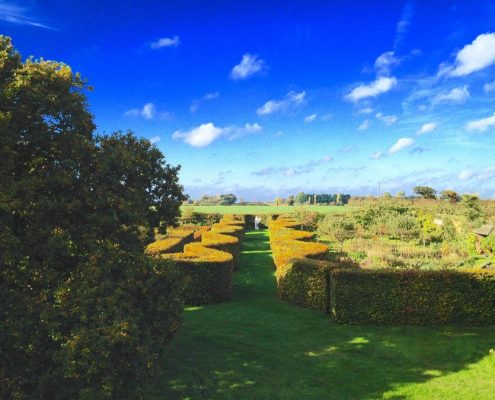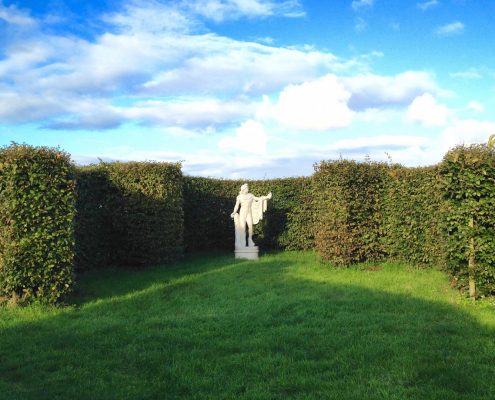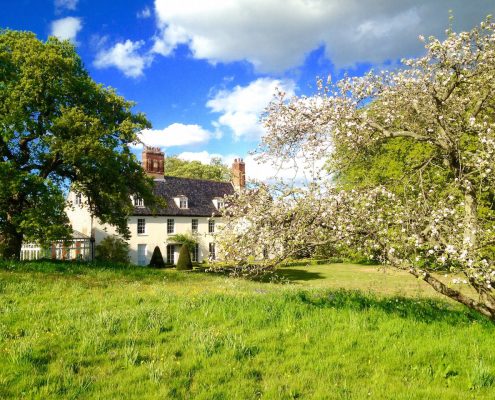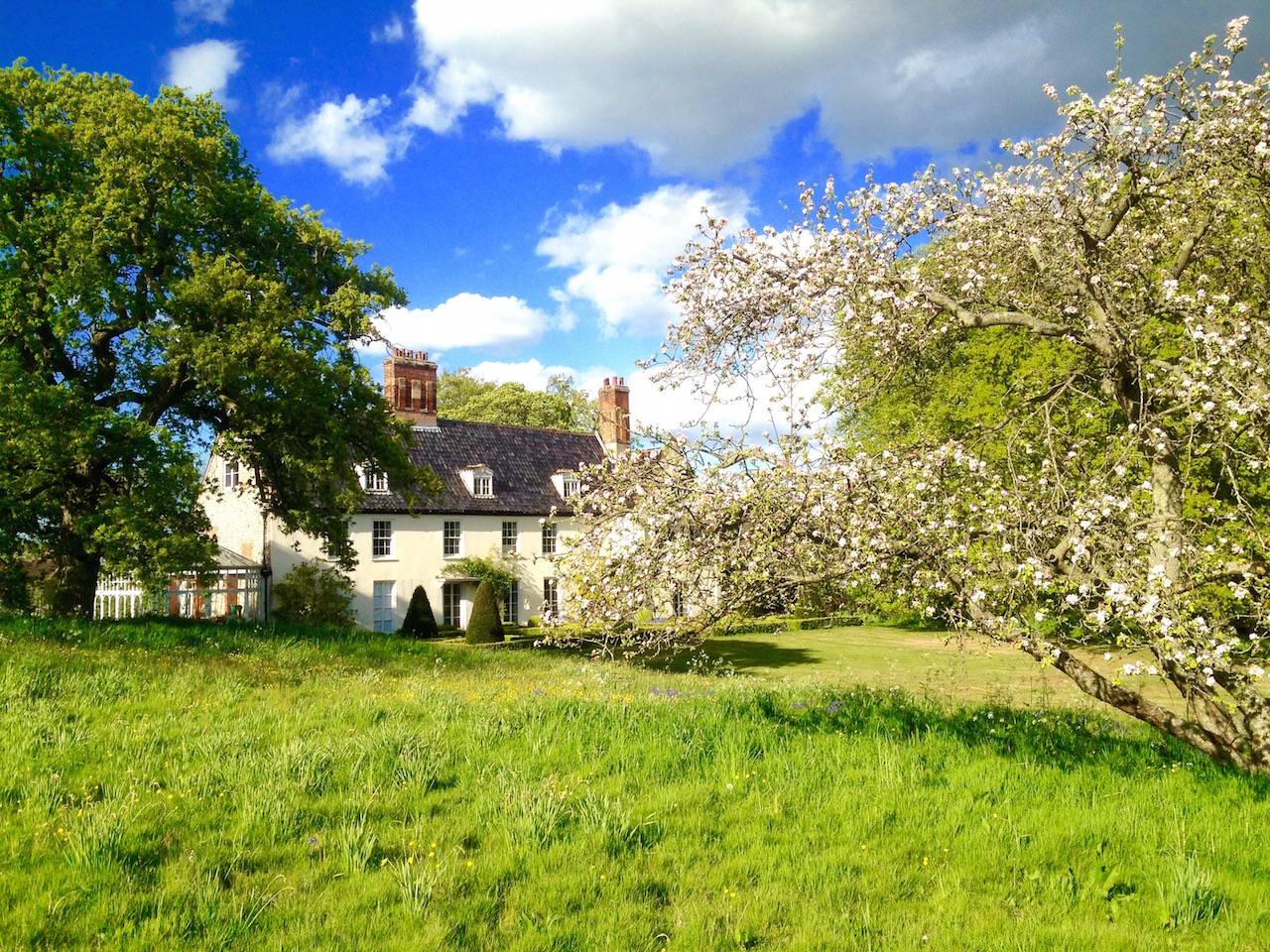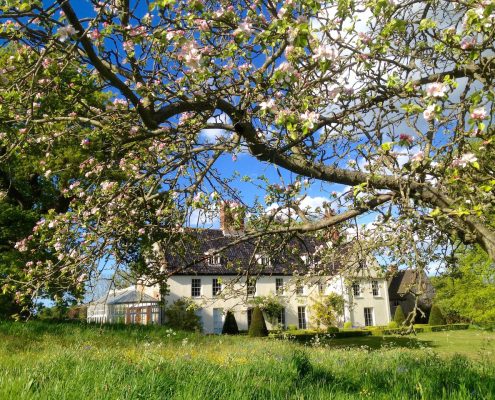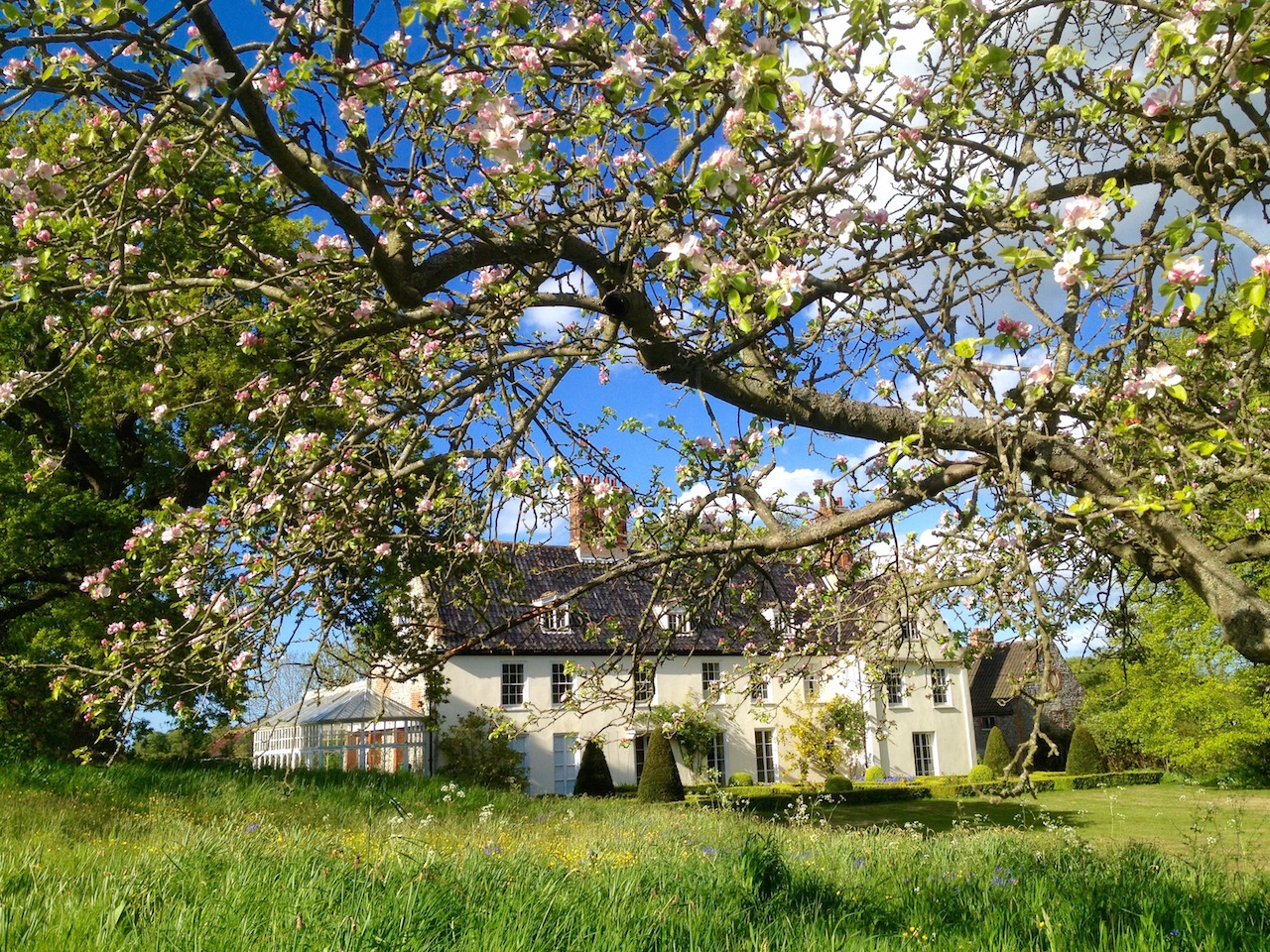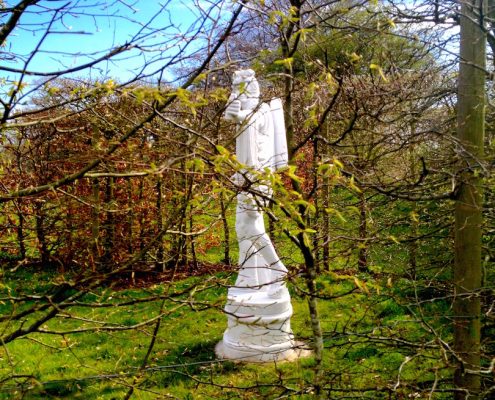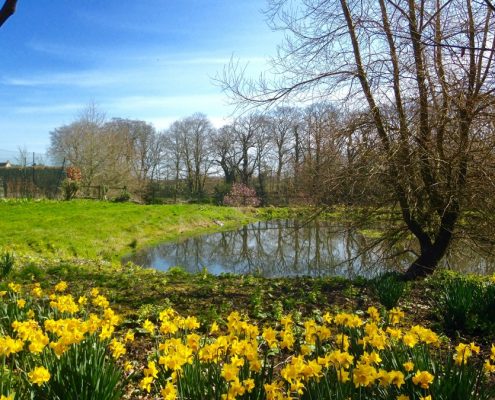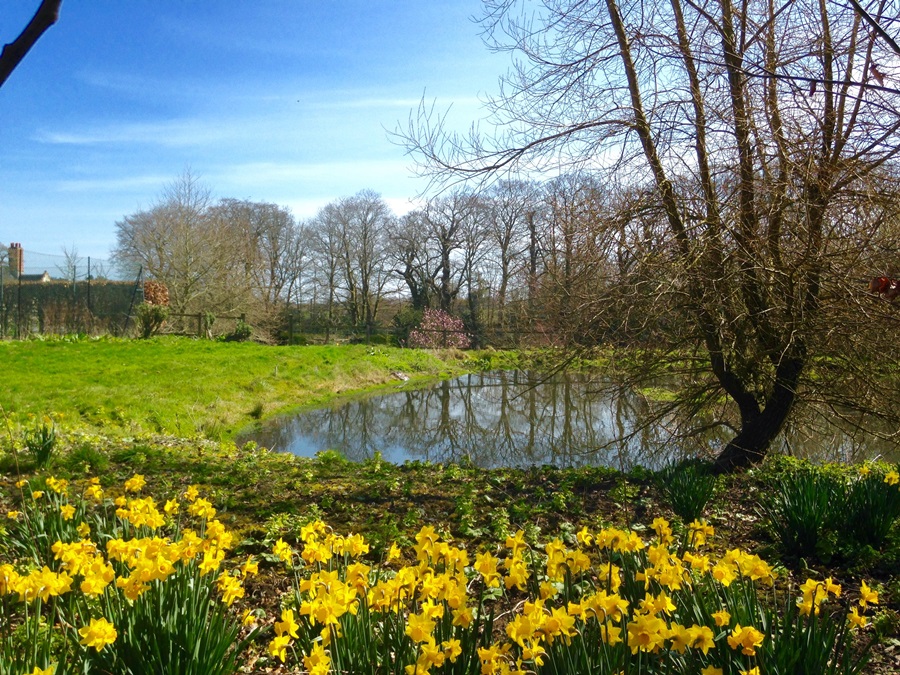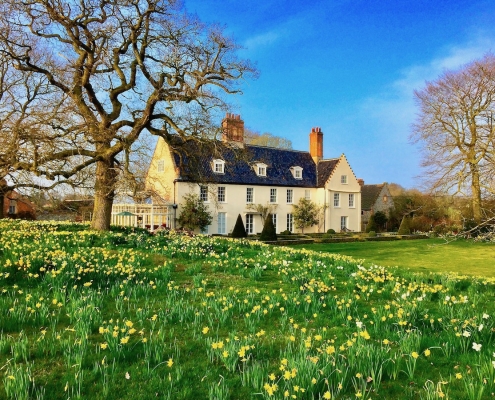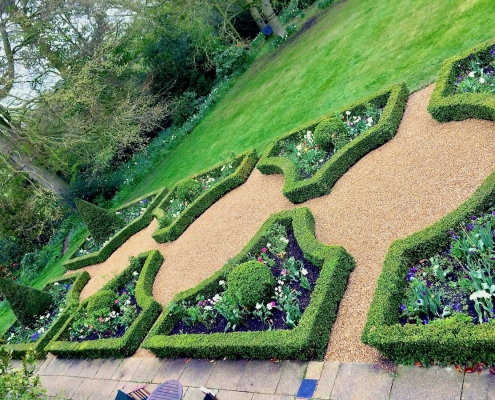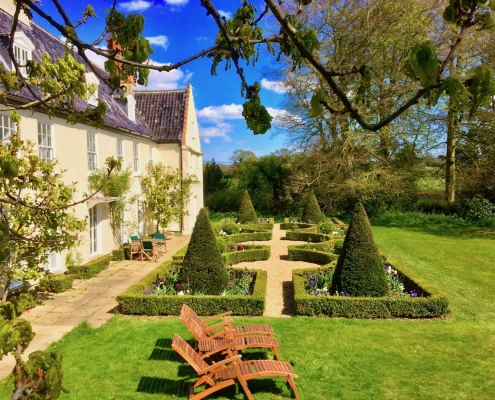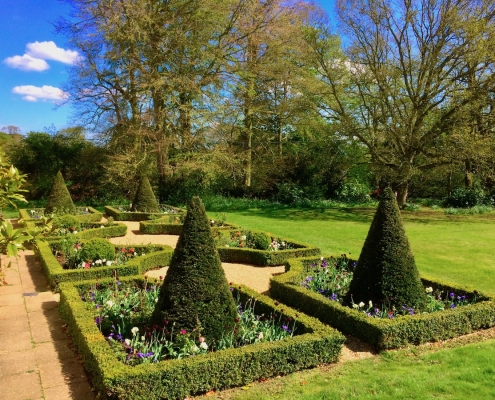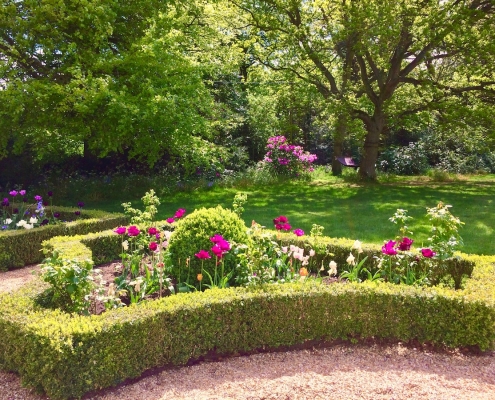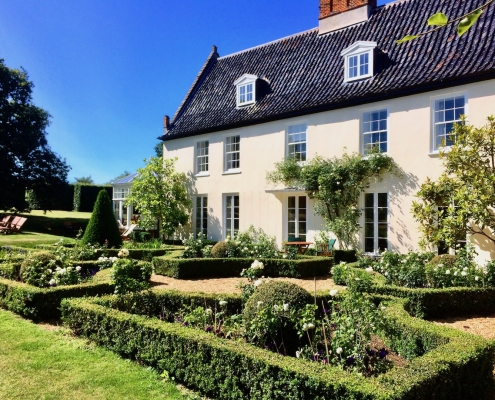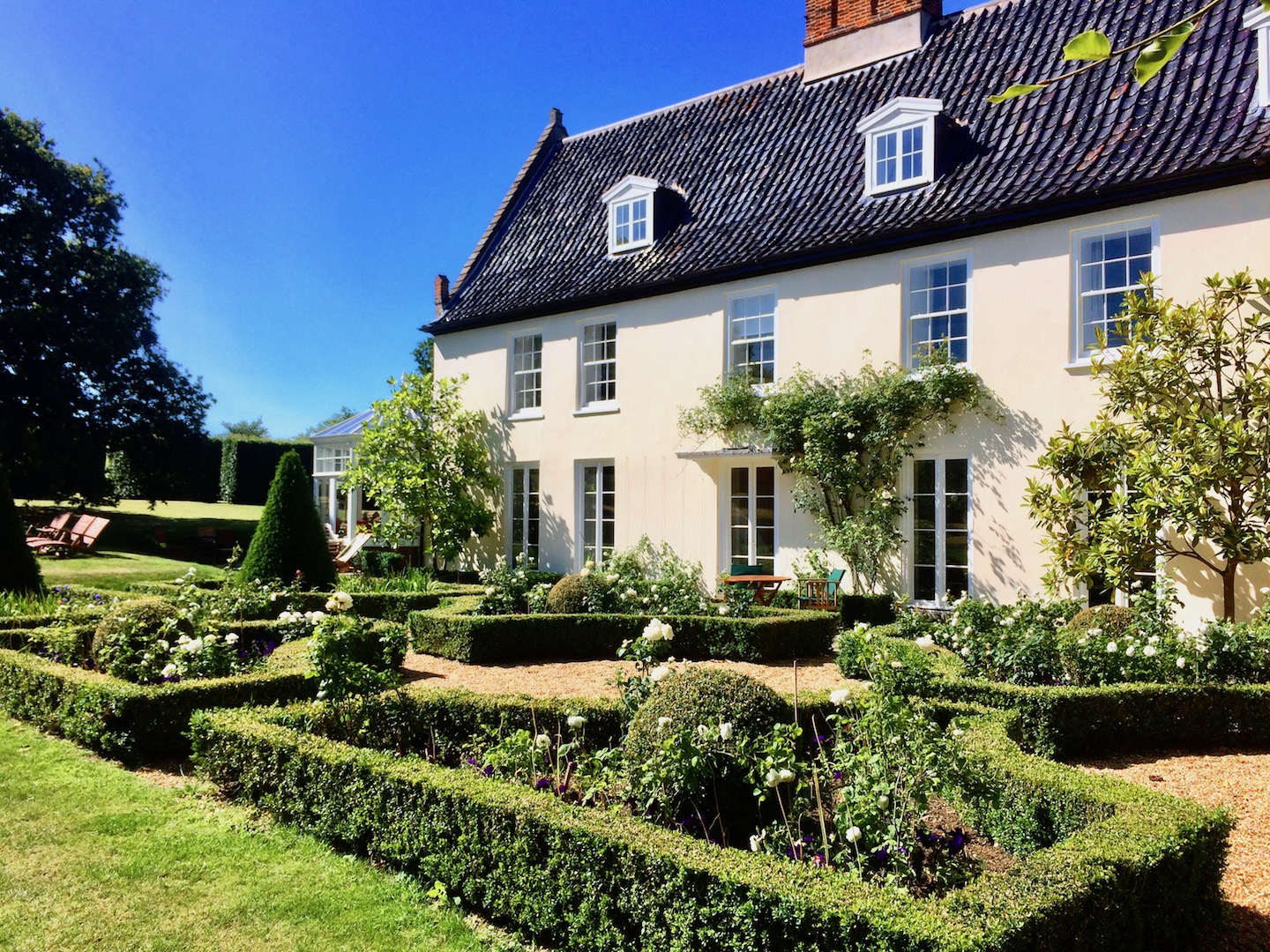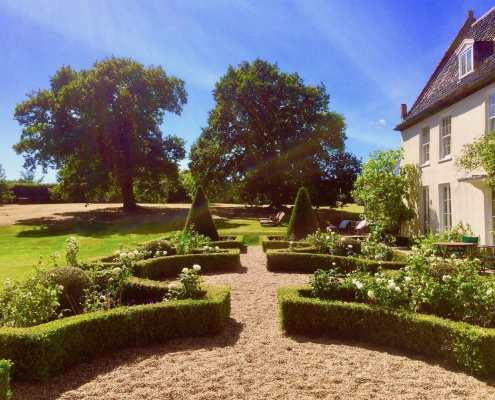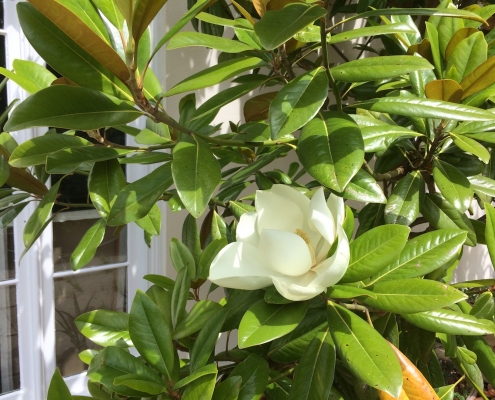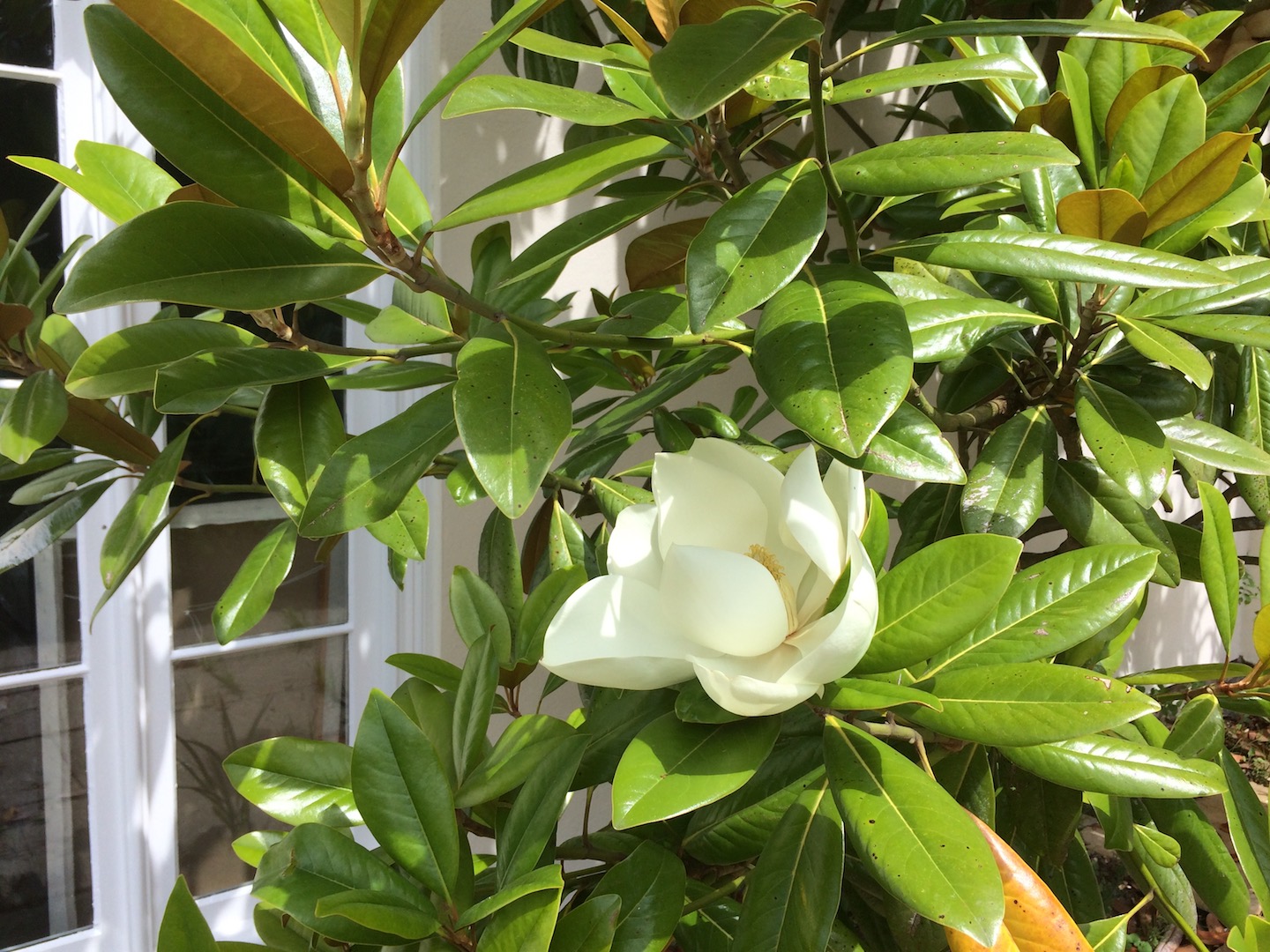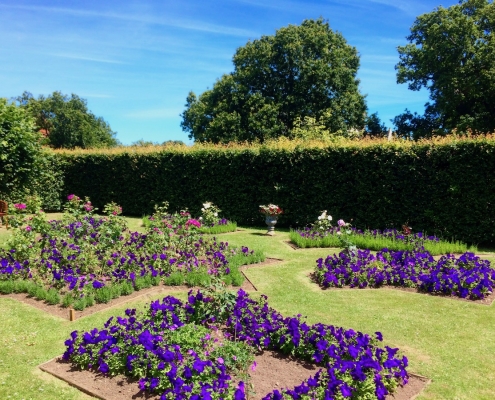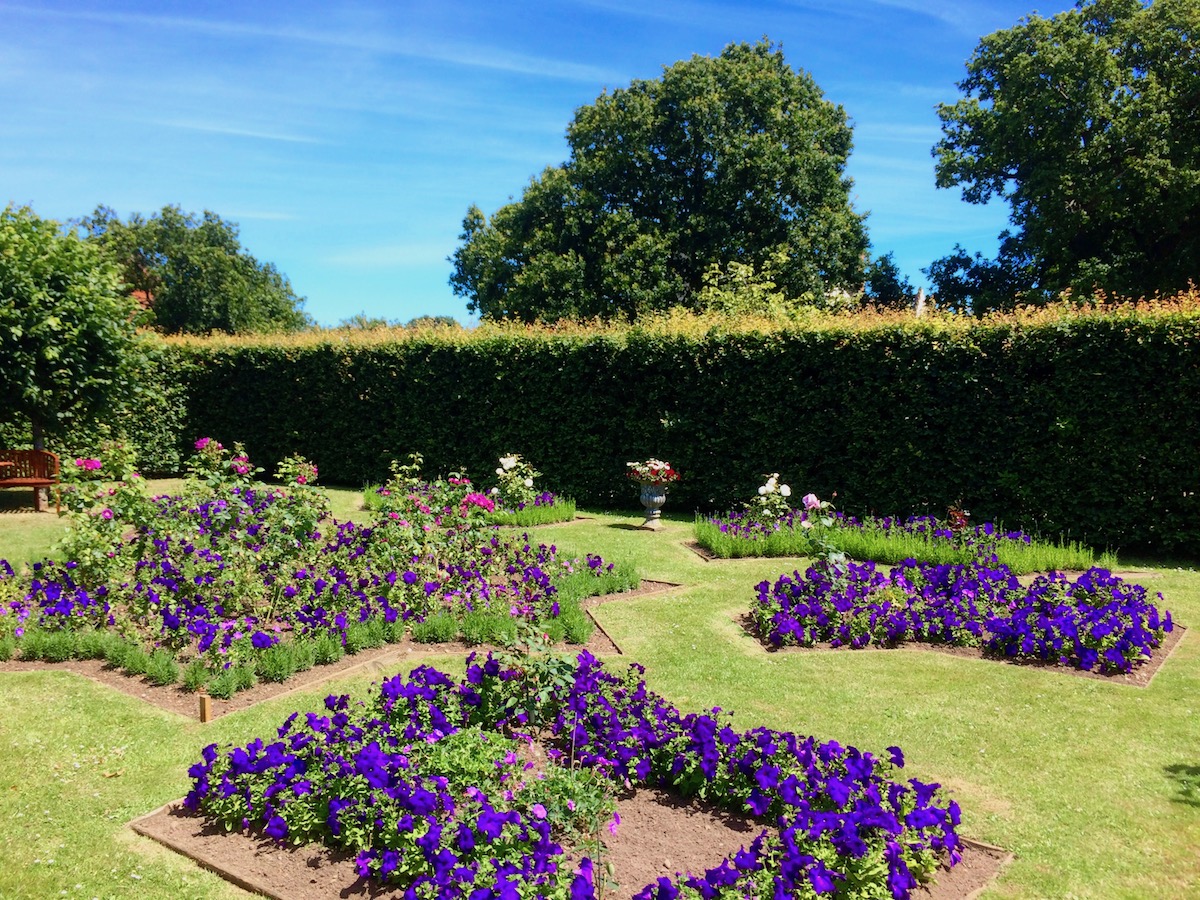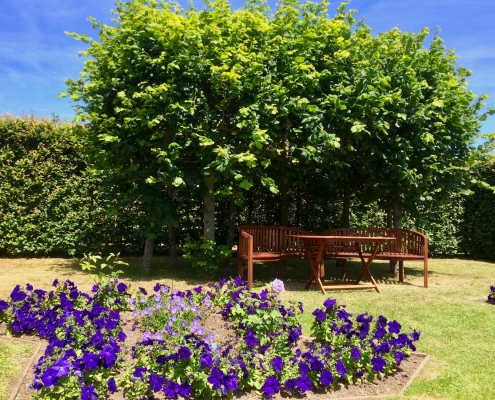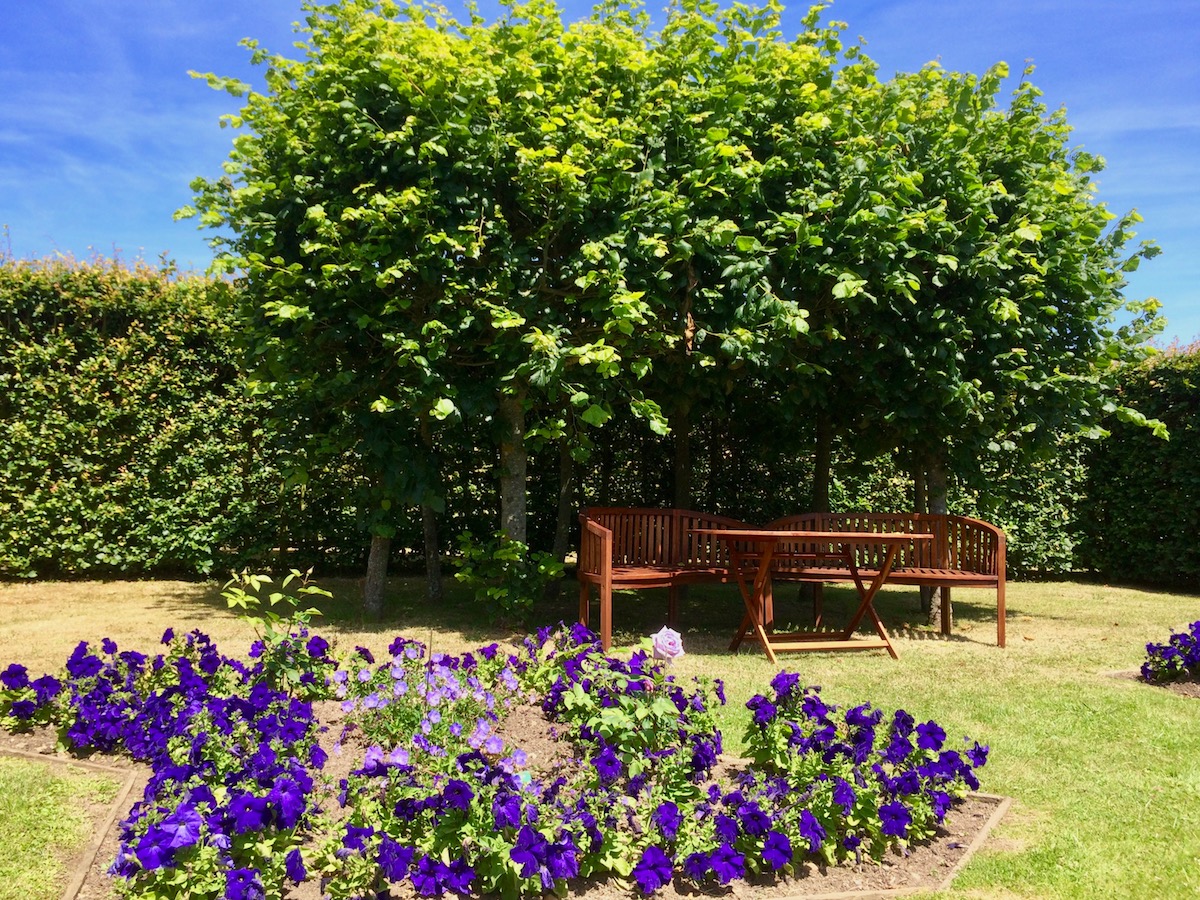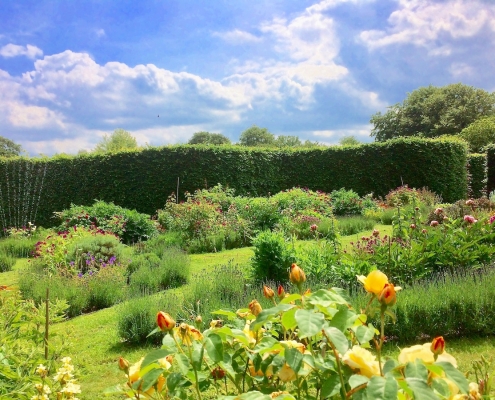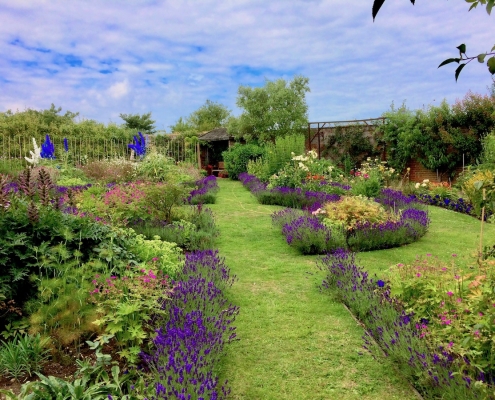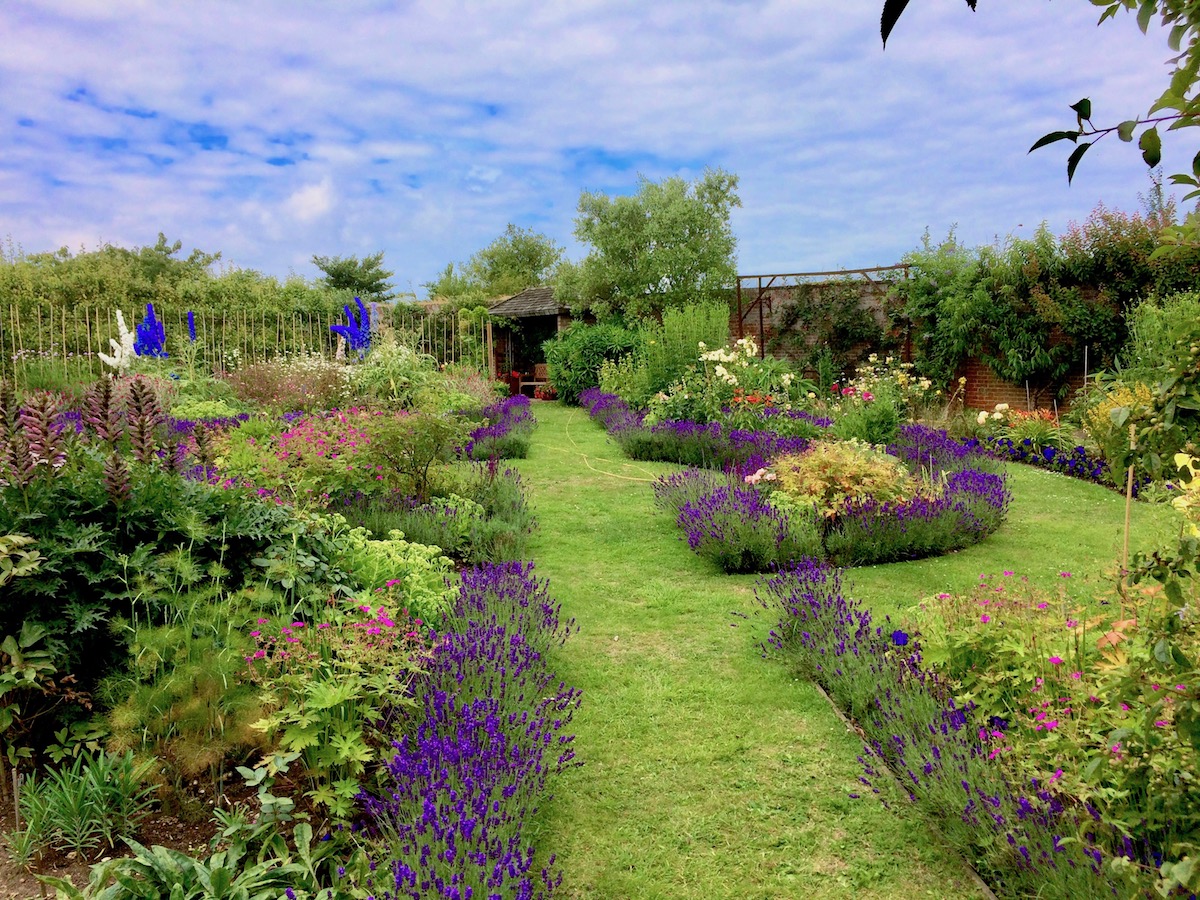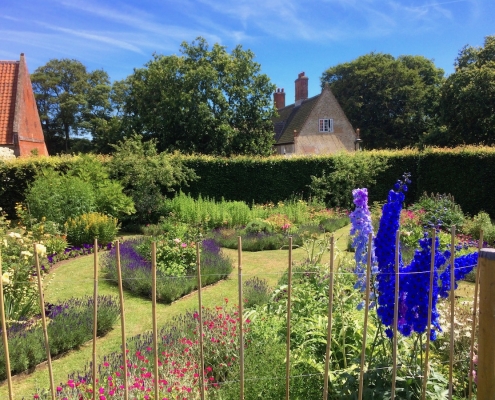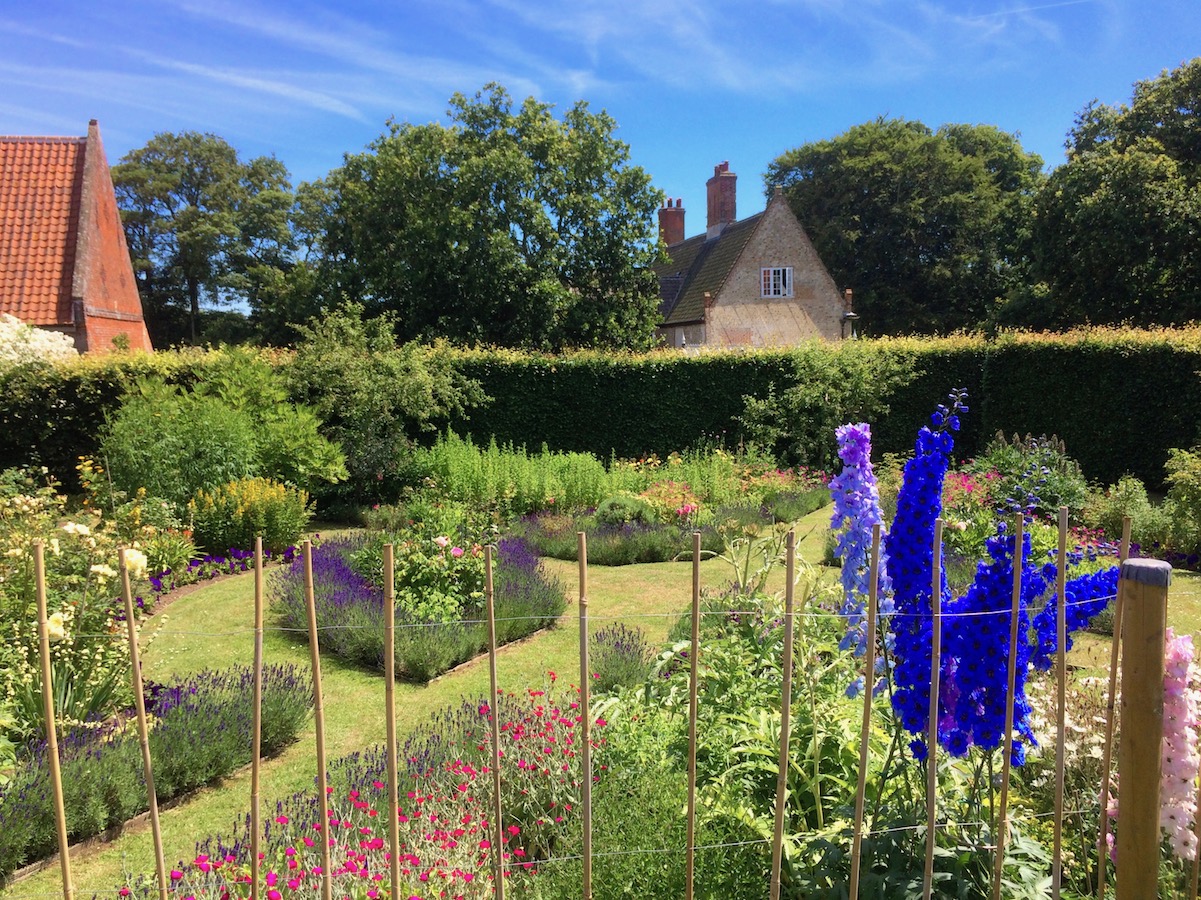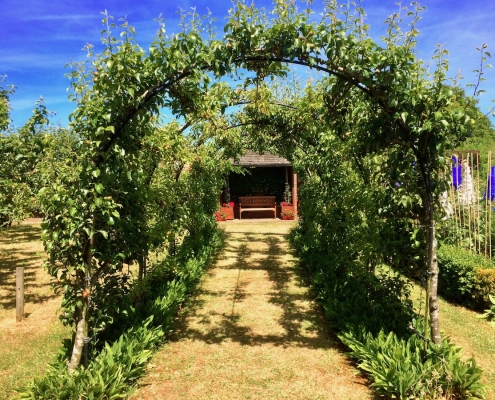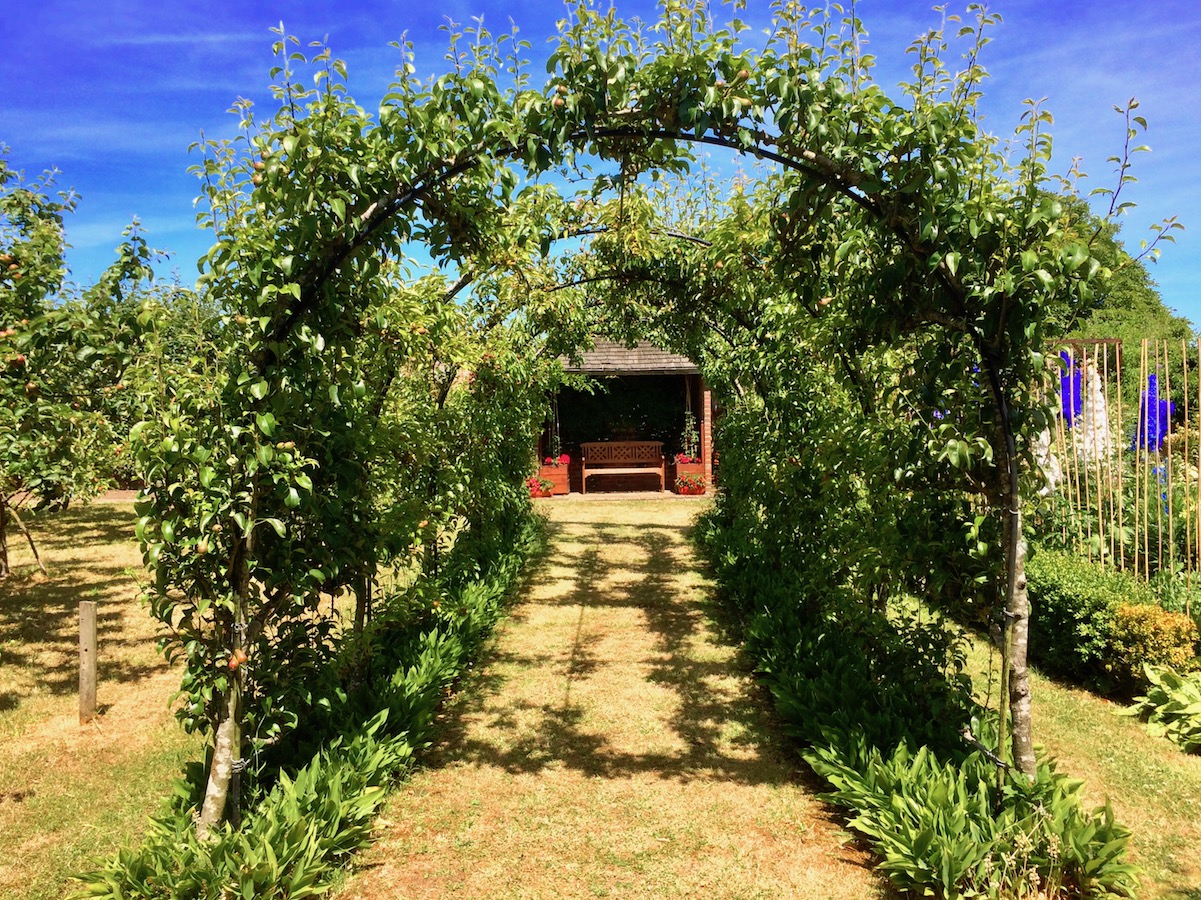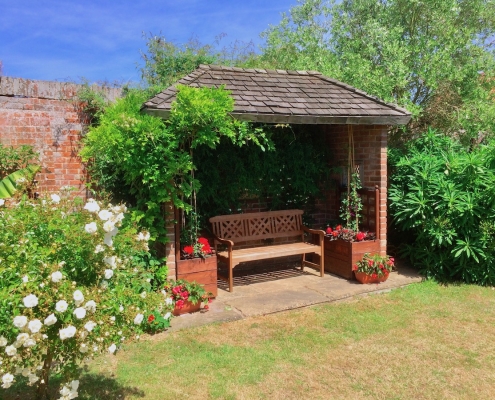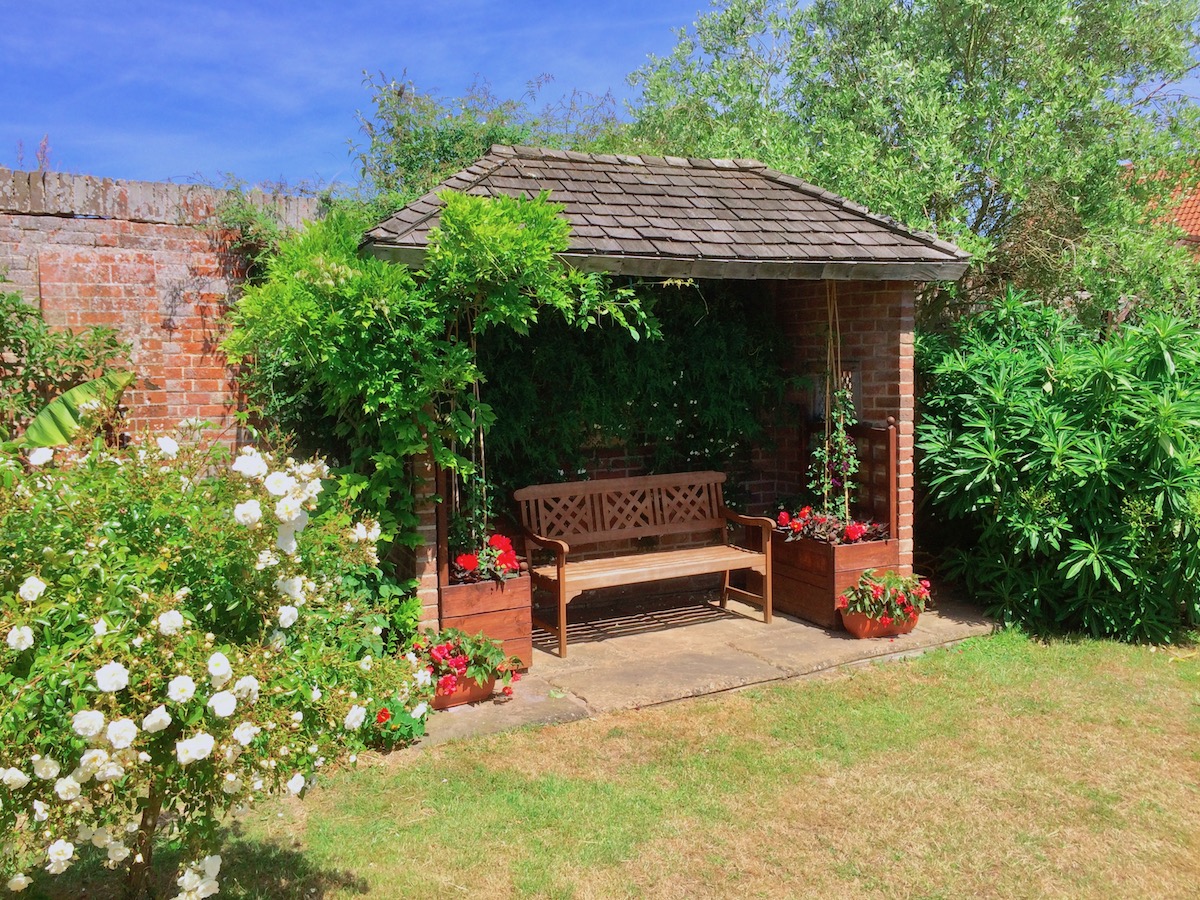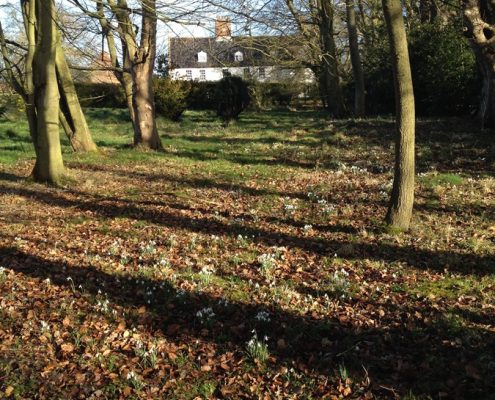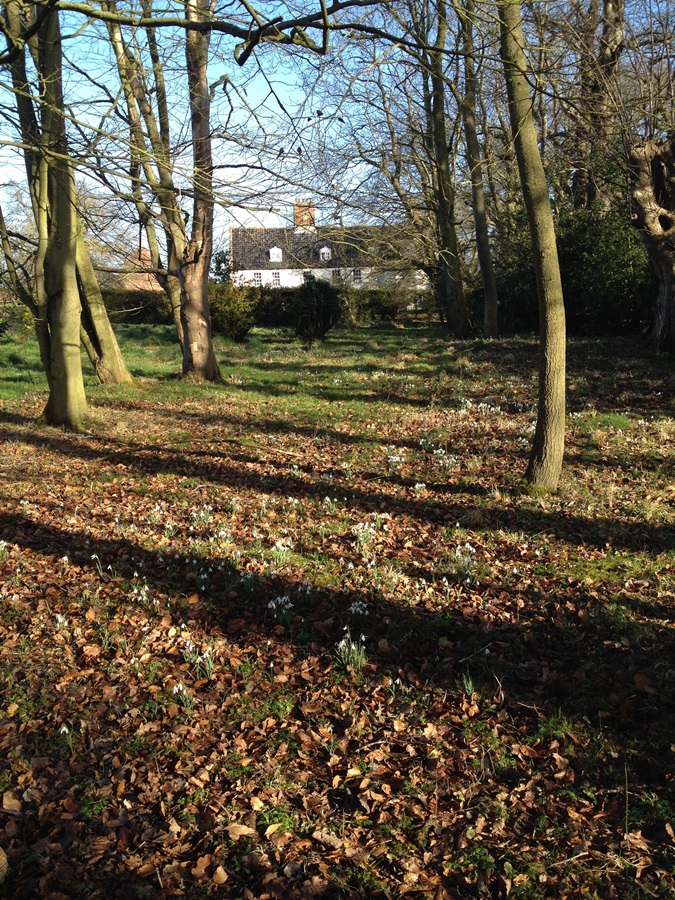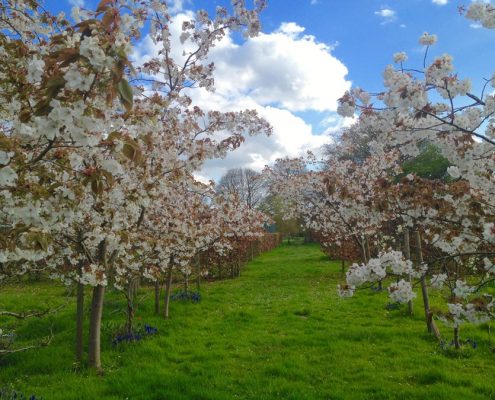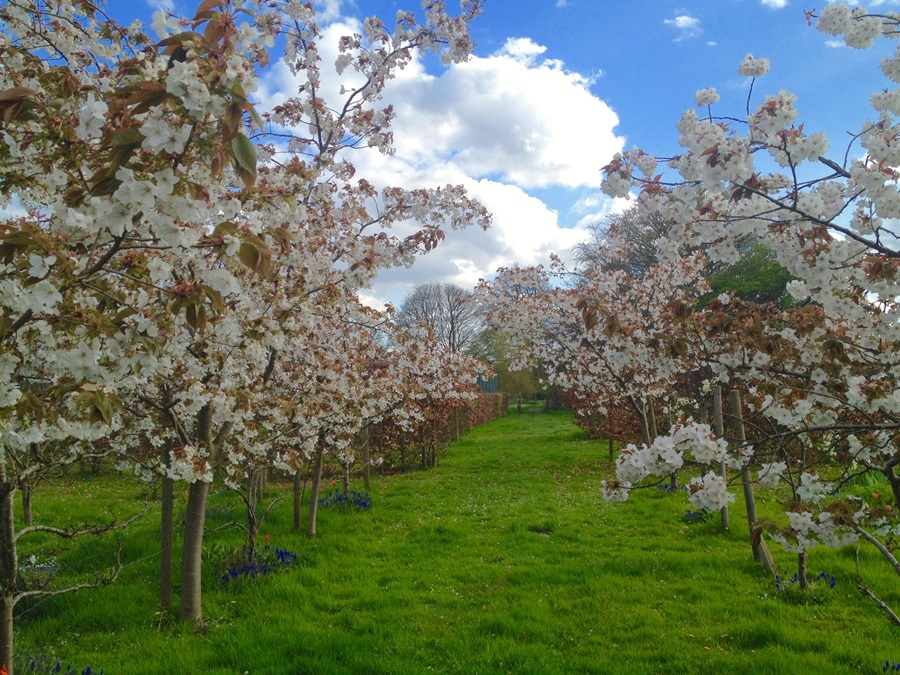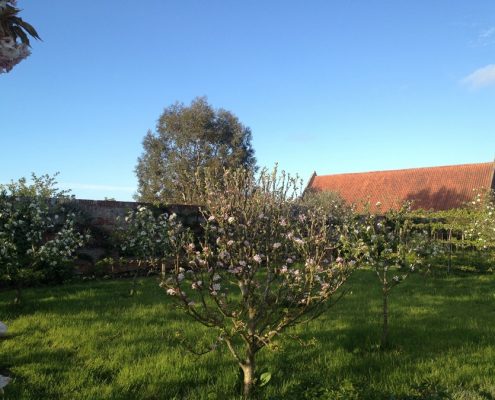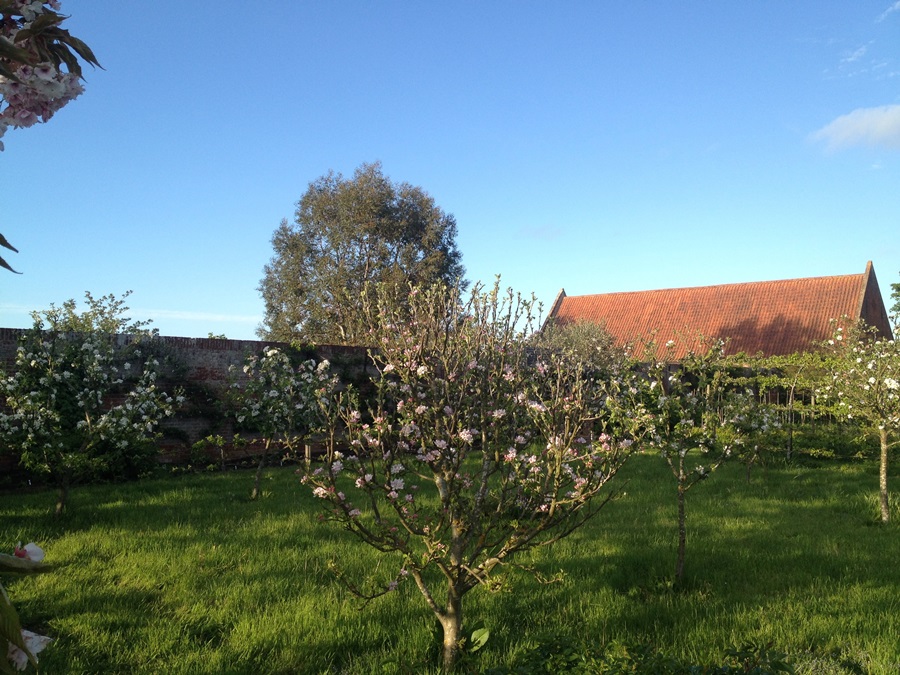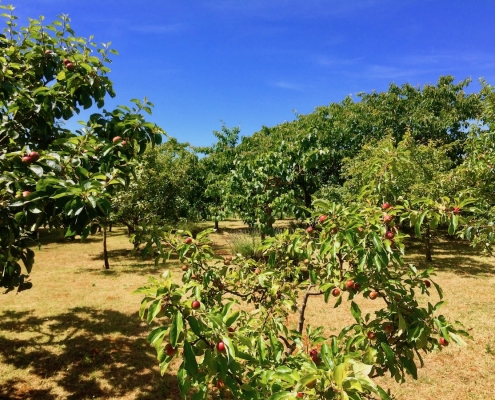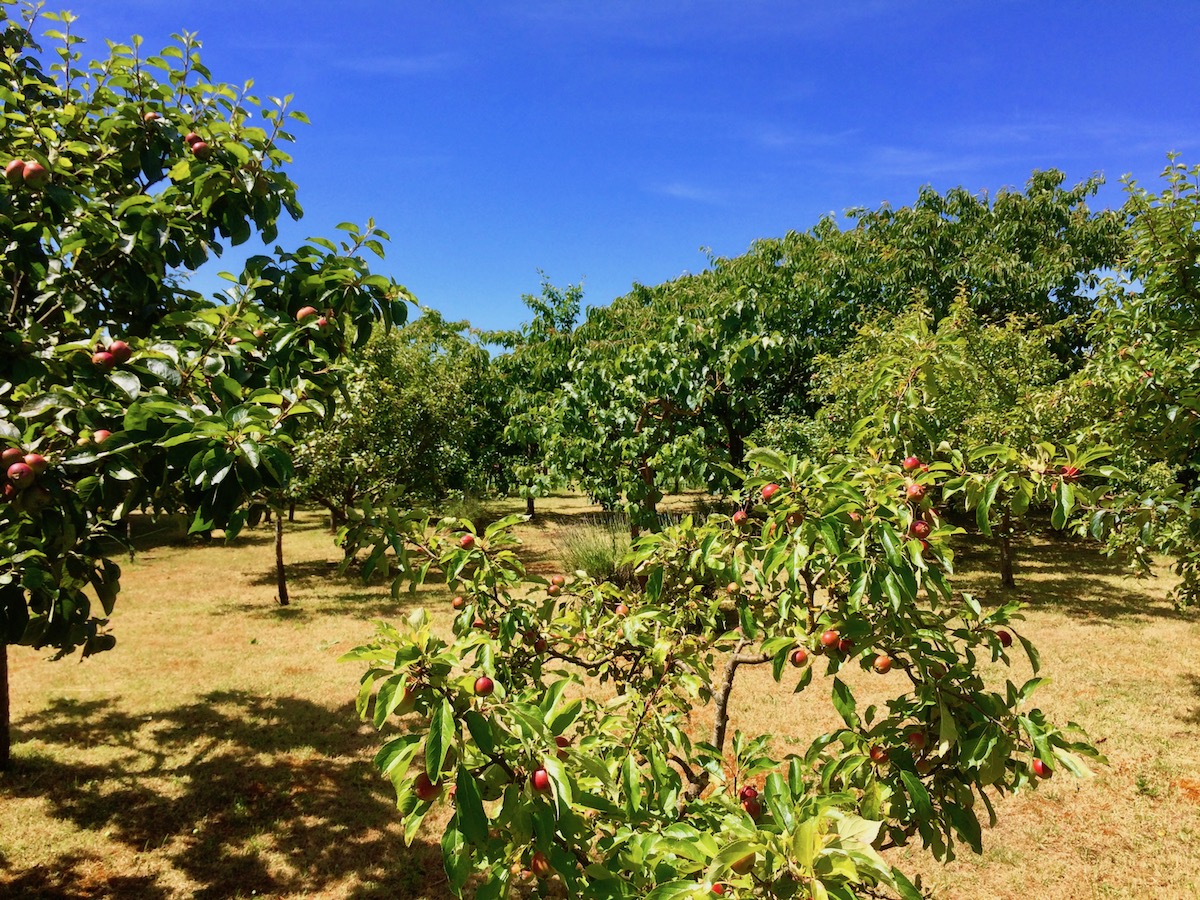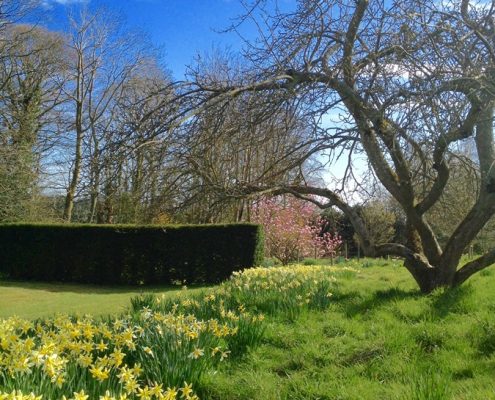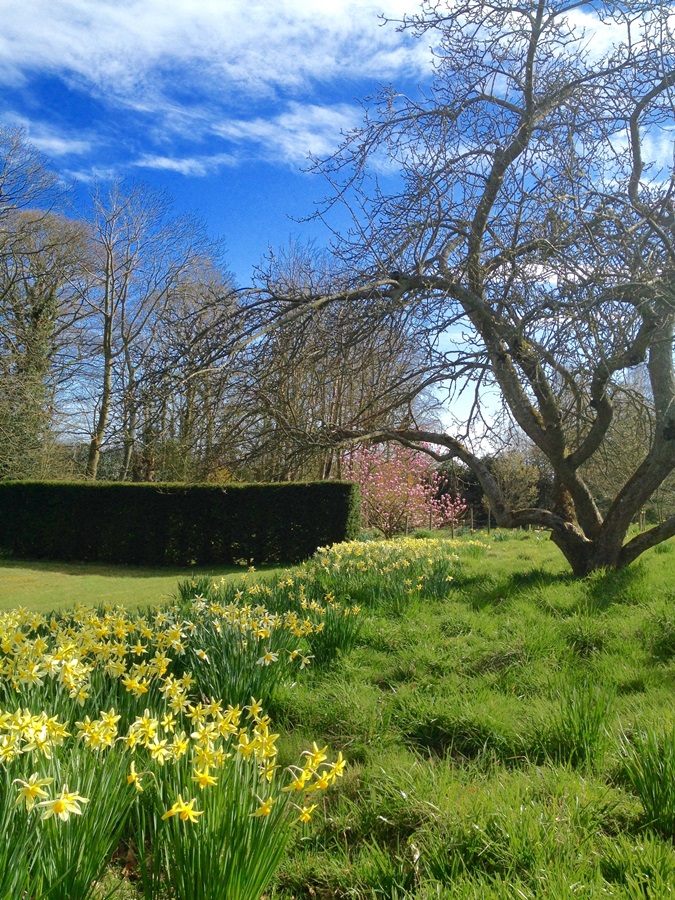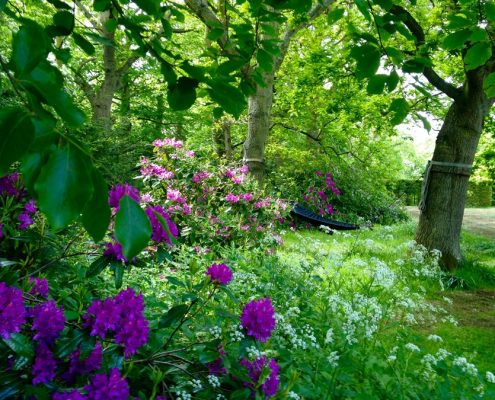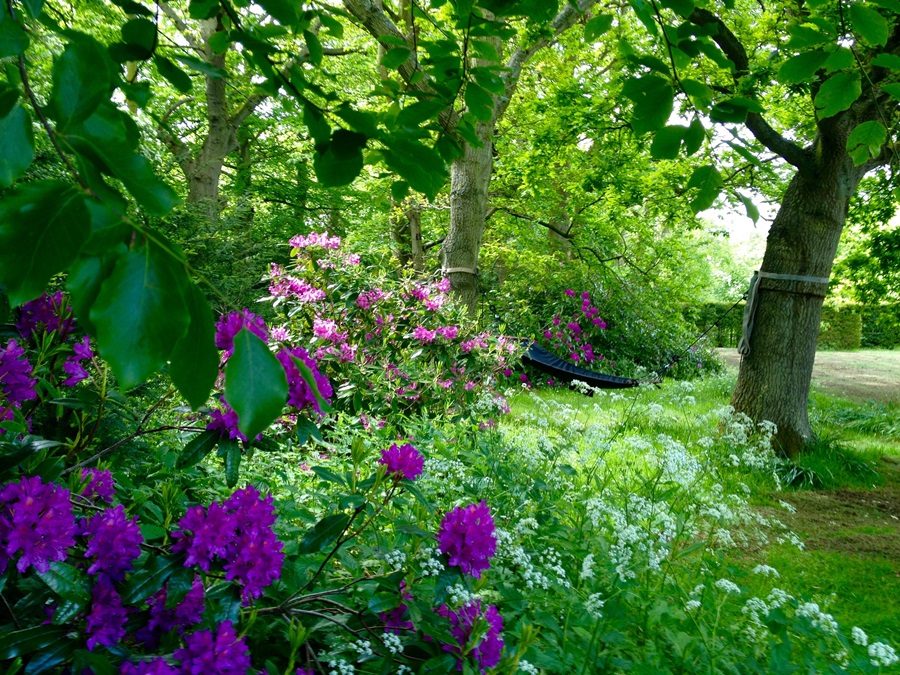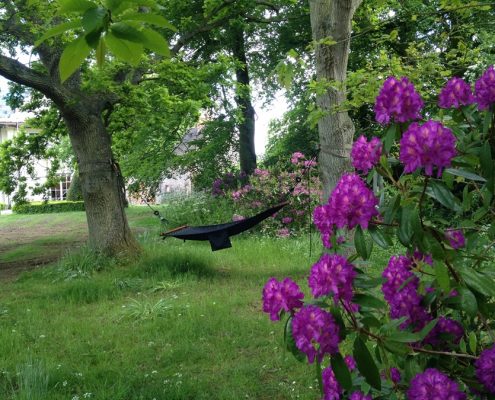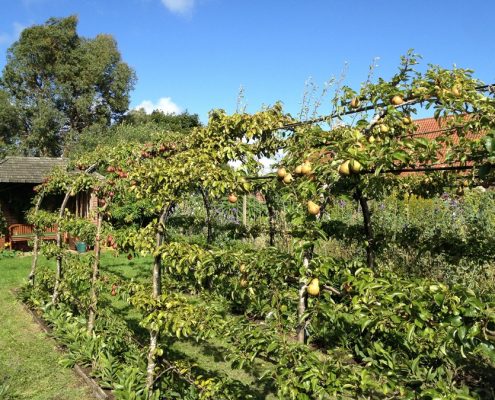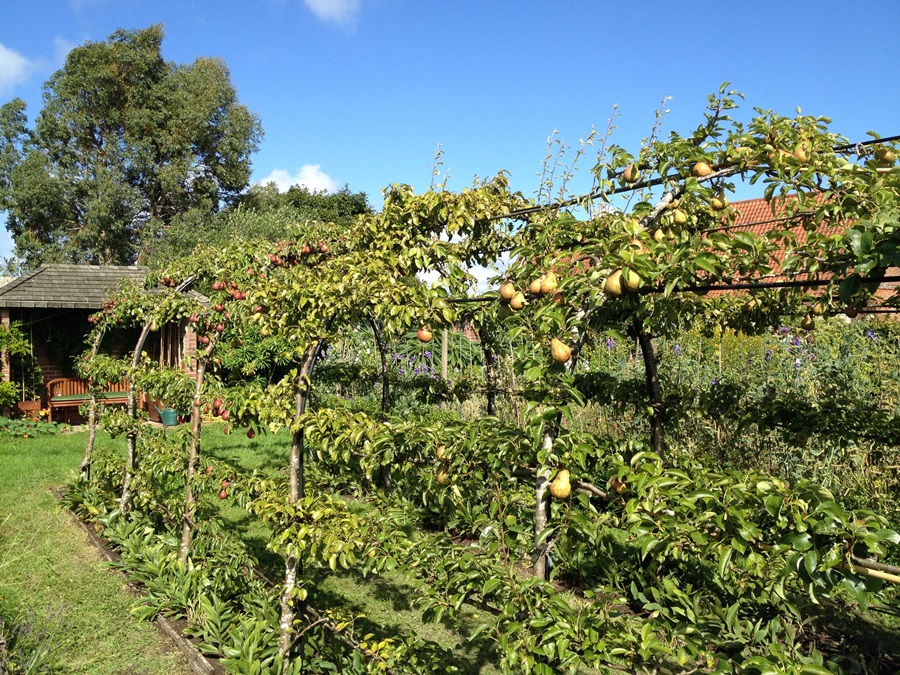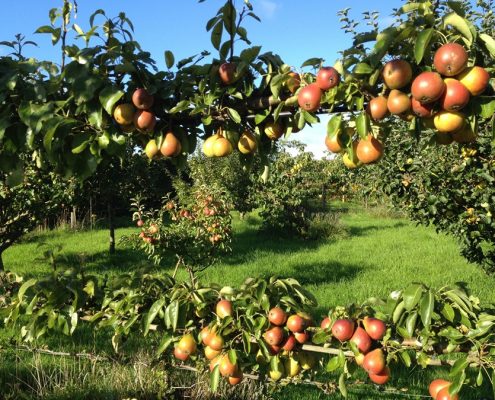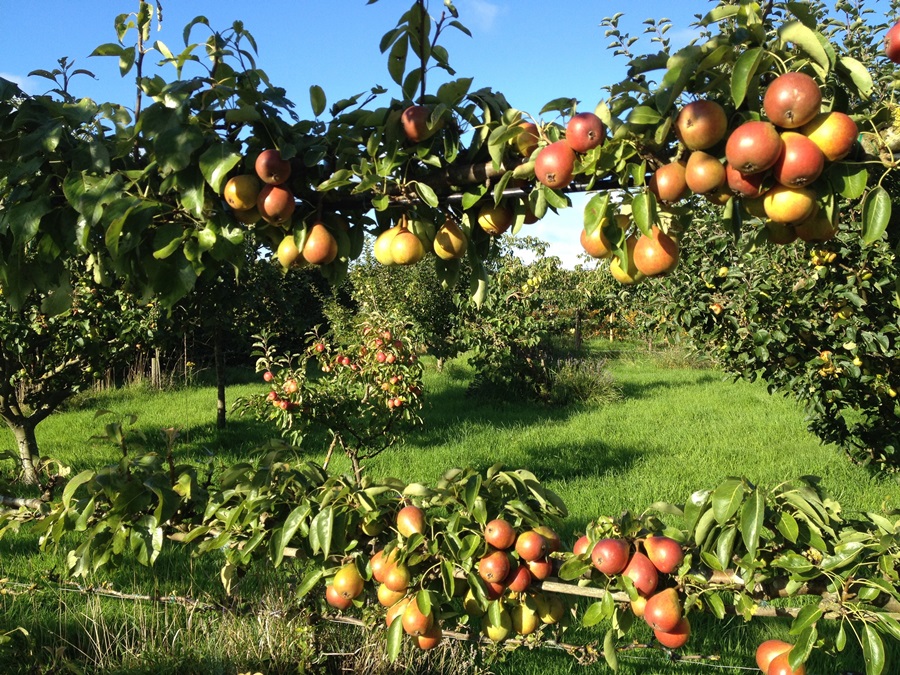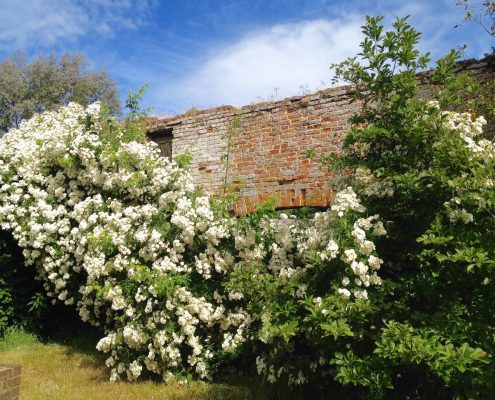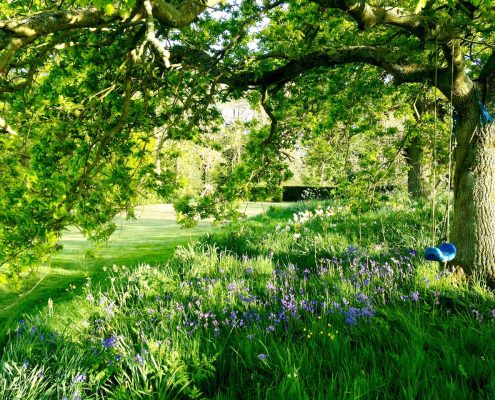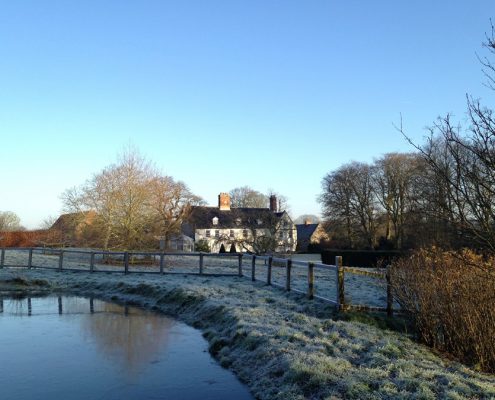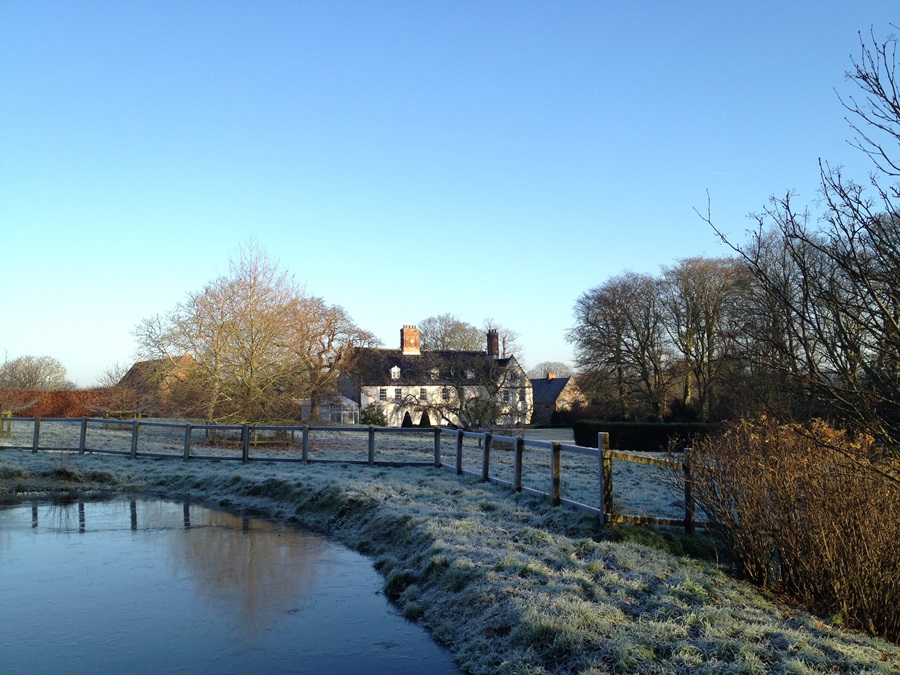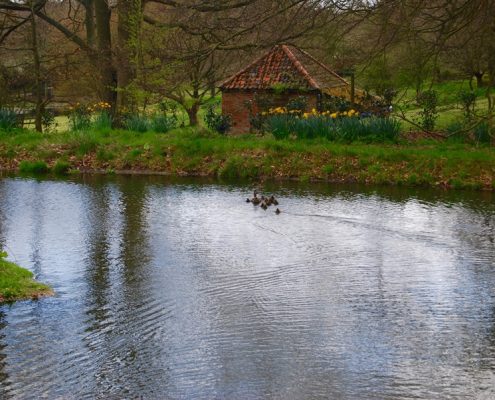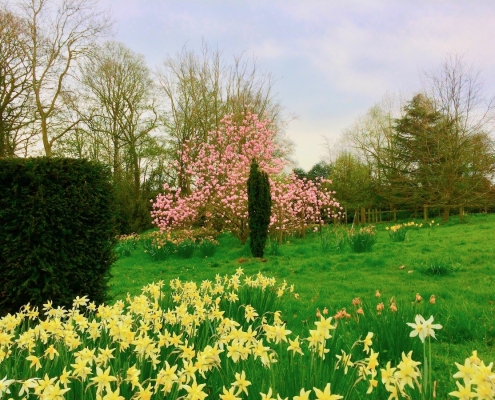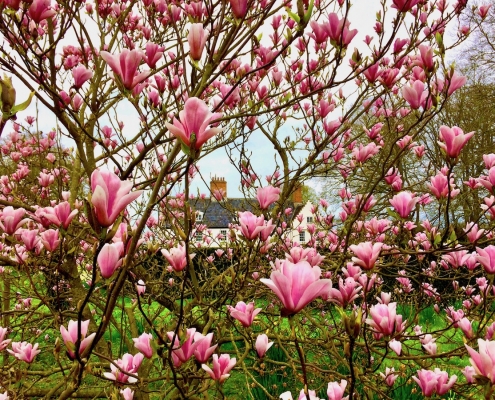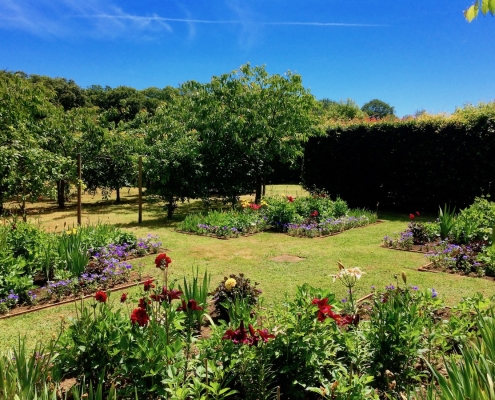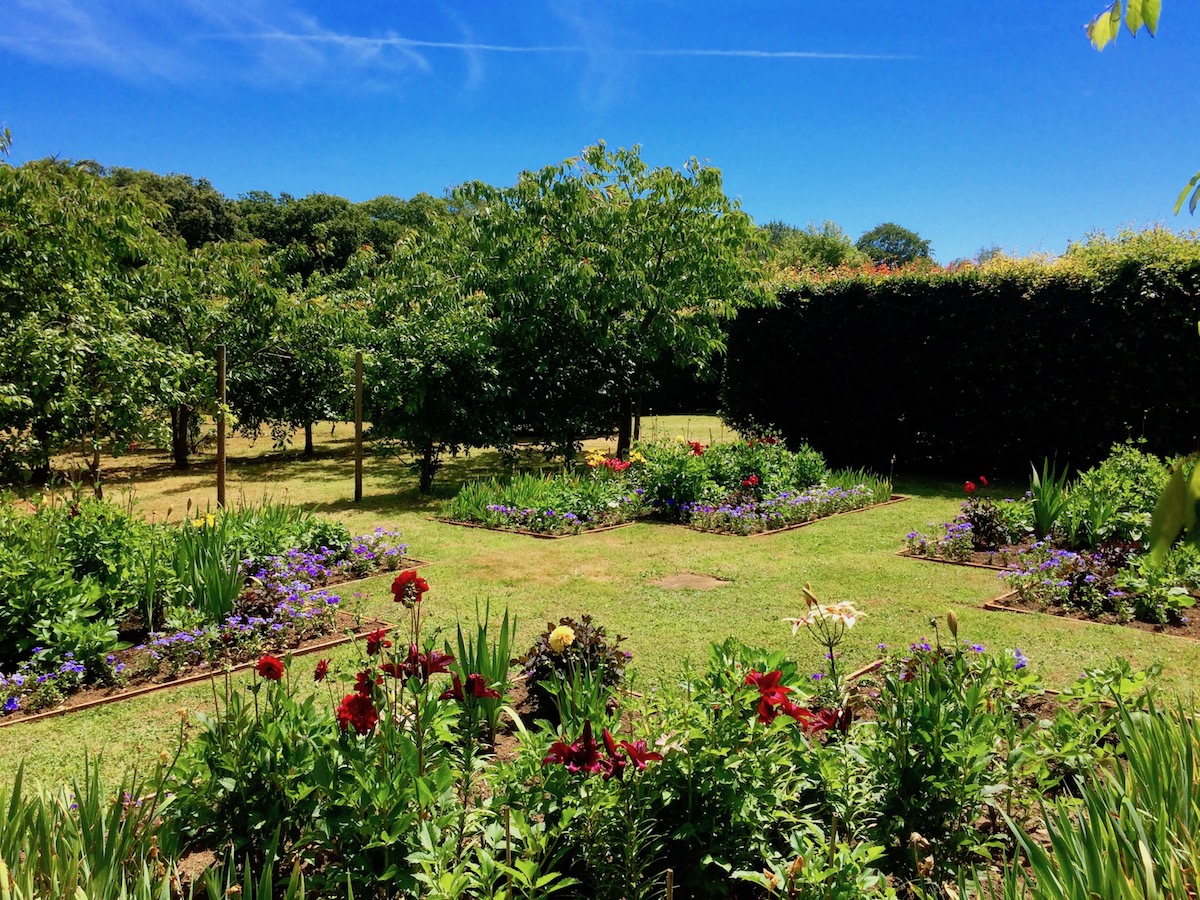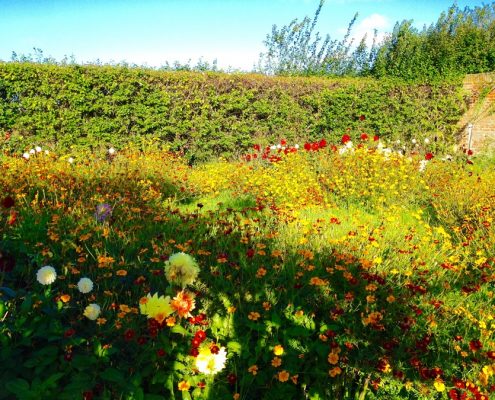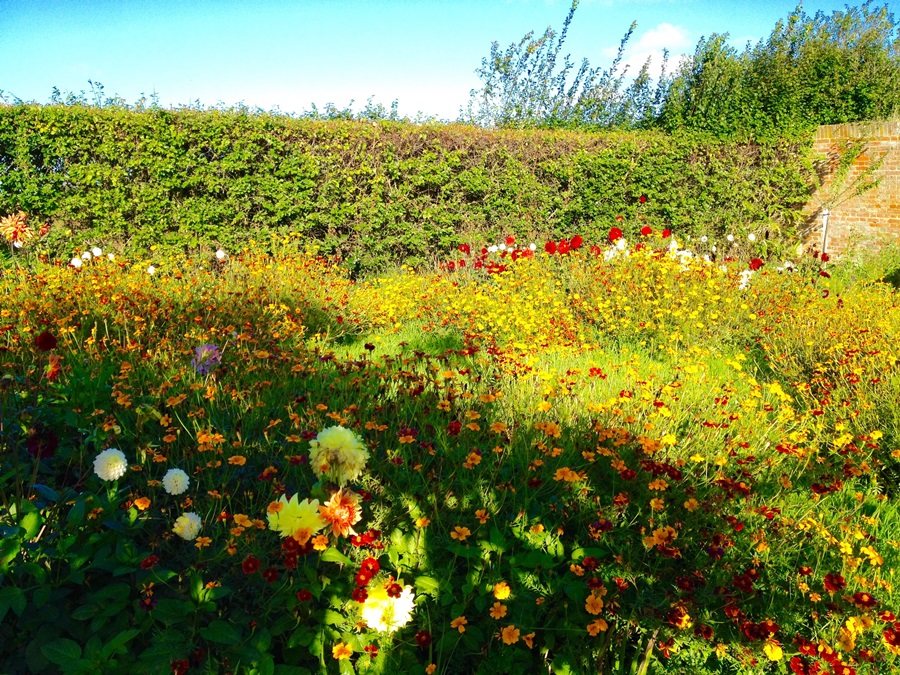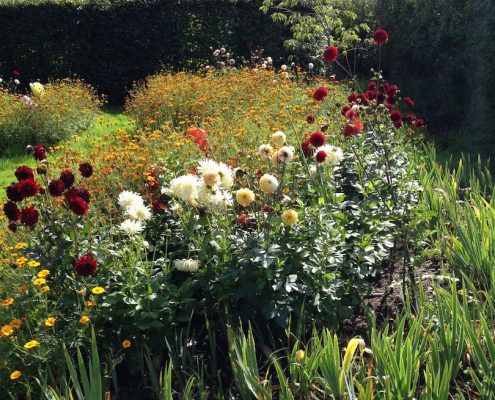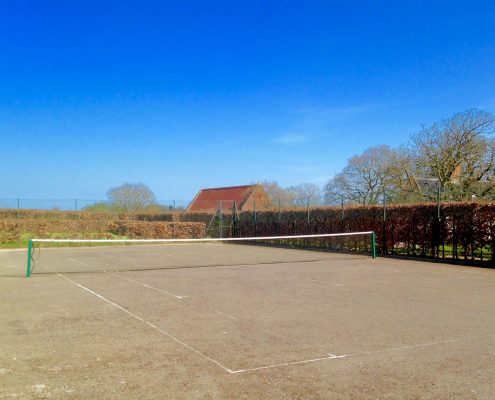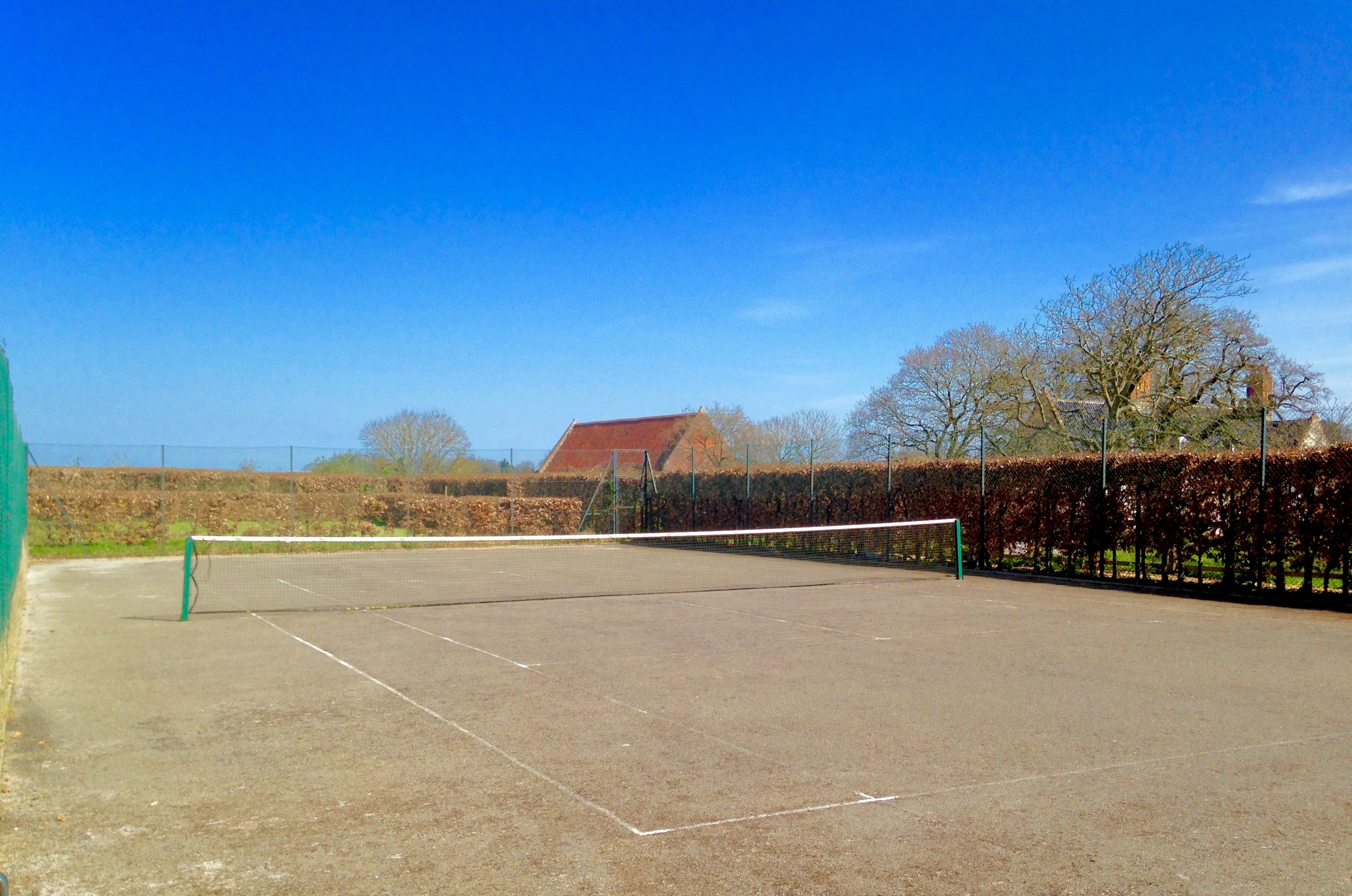Swafield Hall Gardens
Swafield Hall’s garden is famous for its symmetrical serpentine hedges, probably the only ones of their kind in Norfolk. Serpentine hedges took shape from ‘crinkle-crankle’ walls, originally used in Ancient Egypt. Many crinkle-crankle walls are found in East Anglia, where the marshes were drained by Dutch engineers starting in the mid-1600s. The construction of crinkle-crinkle walls has been also attributed to these engineers, who called them “slangenmuur”, meaning snake wall. These walls were used (mostly in Suffolk) to shelter fruit trees from the wind and capture the warmth from the south aspect.
Swafield Hall’s gardens are not open to the public (guests only) except on special occasions, like National Garden Scheme open day. The gardens are so beautiful that some guests prefer to spend most of their time there.
When you go out through the conservatory door, the first thing you’ll see is the Apollo Promenade with serpentine beech hedging, leading to the marble statue of Apollo Belvedere in front of a circus of Hornbeams.
Apollo is the god of music, poetry, truth and healing, sun and light. The original Apollo Belvedere statue has been in the Vatican’s art collection since 1508. It’s considered to be a copy of the lost bronze statue of 330-320 B.C. of the Greek god Apollo. He moves forward majestically and seems to have just released an arrow from the bow which he originally carried in his left hand.
This is a scene from the beginning of Homer’s Iliad when the God Apollo intervened in the course of the Trojan Wars. During this brutal war the beautiful maiden Chryseis was captured by the cruel king Agamemnon. She was the daughter of Chryses, a priest of the god Apollo. Chryseus in the Achaean military camp appeals to Agamemnon, seeking to ransom his daughter. After Agamemnon refuses to return Chryseis, the elder turns to Apollo:
“Hear me,” he cried… and Apollo heard his prayer.
He came down furious from the summits of Olympus,
with his bow and his quiver upon his shoulder,
and the arrows rattled on his back with the rage that trembled within him.
He sat himself down away from the ships with a face as dark as night,
and his silver bow rang death as he shot his arrow in the midst of them.
Apollo sent sanctions – a plague to afflict the Achaean army. In the end, Chryseis was returned, Apollo received gifts and sacrifices, the sanctions were terminated.
In the picture above – a colonnade with Apollo Belvedere statue in the Pavlovsk Park (near Saint Petersburg), conceived by the Scottish architect Charles Cameron as a classic English landscape garden. Pavlovsk was a late 18th-century Russian Imperial residence of Russian Tsar Paul I. The marble and bronze copies of Apollo Belvedere can be seen in many parks in the Tsars’ summer residences in Russia. .
The box framed Parterre is on the left from the conservatory, near the South facade of Swafield Hall. The Parterre was created in 1999 by Norfolk garden designer Martin Perry. But even before that, there was a regular rose garden in front of the southern facade of the hall. In spring time there is an abundance of gorgeous tulips, in summer – white and pink roses in bloom. In front of the house you can see two rare magnolias grandiflora with large, lemon citronella-scented white flowers and old fashioned climbing roses ‘Madame Alfred Carriere’, popular since Victorian times. This rose can be seen in the pictures of the house taken in the 1950’s.
Walk along the Apollo promenade and discover the Secret Garden with nine flower beds taken from the pattern of a Persian carpet. You can take a rest here, sitting under a lime tree canopy with two benches and an oval table, and enjoy the lavender borders and fragrant roses, including “Rhapsody In Blue” with semi-double blue-purple flowers (it was named Rose of the Year in 2003), “Blue Moon” with beautiful, highly scented large lilac blue blooms, white rose “Pascali” and rose “Black Baccara” with petals of deepest maroon.
If you want to play croquet, take with you the croquet set (from the conservatory) to the Croquet lawn, which is opposite the Secret Garden.
Our guests are welcome to use the tennis court, next to the Croquet lawn.
An impressive Pear Tunnel leads to the little garden pavilion with a bench in front of jasmine, were you can enjoy the view to the orchard with espalier apples and a lot of Norfolk varieties of apple trees. For example, you can find in the orchard the “Norfolk Royal” apple which was found as a chance seedling at North Walsham, introduced in 1928 and soon become well known in East Anglia. There are 6 varieties of pears in the Pear Tunnel and orchard, including “Concorde”, “Williams”, “Doyenne de Comice”, “Conference”, “Robin” and local pear “Blickling”.
There is a stunning Summer garden near the Pear Tunnel, with 8 flower beds filled with beautiful plants, herbs and flowers. The Victorian brick wall protects the gardens from the north wind. In olden times a vine grew near the wall. Now you can find there Apricot Moorpark, Peach Dymond, Nectarine Lord Napier and sour cherry.
The Autumn garden with irises, lilies and beautiful dahlias is near the marble statue of Apollo Belvedere at the end of the Apollo promenade.
There is also a duck pond, woodland area with forest walk, splendid rhododendrons and snowdrops. In March and April the lawn and woodland are covered with daffodils.
The gardens span 4 acres. The access to the gardens from the hall is through the conservatory or through the gates in the courtyard (please keep the gates closed so our dog can’t run out onto the road).
A barbecue and tables are situated in the garden for outdoor breakfasts / dinners and there is a seating area by the large wooden Victorian style conservatory. There is also an outdoor sunbathing area with deck chairs and cocktail table, shaded relaxation area with a hammock near the main lawn /forest walk, a relaxation area in the Secret garden with a lime tree canopy and two benches and table etc.
Photos of Swafield Hall’s gardens by month are here. Very recent photos are on www.facebook.com/SwafieldHall.


